


















are grinners:
Dairy Industry awards.




















are grinners:
Dairy Industry awards.
An Ashburton couple who took out one of the main prizes at the 2025 Canterbury/North Otago Dairy Industry Awards see themselves as custodians of the land who aim to leave it in a better state for the next generation.
Richard Grabham and Nikita Baker, who contract milk on Geoff Baker’s 420ha, 1450-cow Ashburton property were named winners of the region’s Share Farmer of the Year category at the Dairy Industry Awards (DIA) regional final in Ashburton recently.
Other major winners were George Dodson, a former FMG Young Farmer of the Year

award winner, who was named the 2025 Canterbury/North Otago Dairy Manager of the Year, and Caleb Smith, who was awarded the Dairy Trainee of the Year title.
Richard and Nikita said their flexibility within their roles on farm is a key strength of their business.
“We’re a joint management couple and can both run the farm solely if the other is away, which mitigates risk for the business if
ever there was a reason that one of us was unable to work.”
Nikita said they’re a very adaptable business that welcomes new challenges and are always seeking for improvements around our people, land and animals.
“We have a great team that also wants to see the business do well and are always ready to take on new challenges.”




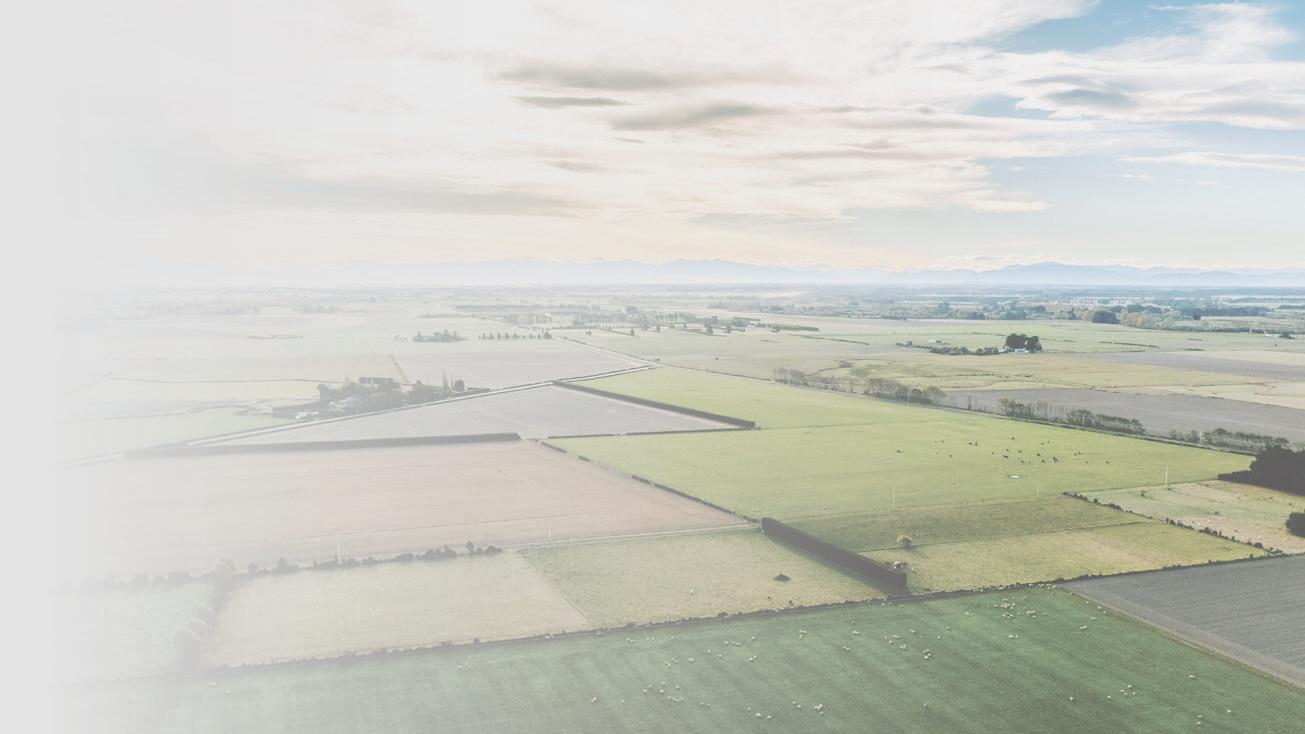

Congratulations to our lucky winners
Bayleys is proud to be a National Sponsor of Surfing for Farmers. To celebrate, we gave away two surfboards at the recent South Island Agricultural Field Days. Congratulations to our lucky winners, Brooke Talbot from Kingsdown and Daniel Scott from Leeston — we hope you enjoy your new boards !
FROM PAGE 1
Nikita was a finalist in the 2019 Dairy Trainee category and said the DIA programme has helped with setting personal and business goals and pushed them to take on new challenges.
The couple, who won $9,500 in prizes plus three merit awards, said one of their biggest challenges was staff recruitment post-Covid, and experiencing high inflation rates during their first year of contract milking.
“Having clear sights on the end goal is a great motivator,” Richard said.
“It sets you up for success knowing that the more effort we put in the more the reward is.”
Future farming goals for the couple include sharemilking and farm ownership.
“We’d also like to purchase two more rental properties to mitigate risk.”
The winner of the 2025 Canterbury/North Otago Dairy Manager of the Year category was George Dodson is farm manager on Andrew and Hayley Slater’s 113ha, 440-cow property at Darfield.
Dobson placed second in the same category in 2024 and won the FMG Young Farmer of the Year award in the same year.






He has entered the DIA previously in the Dairy Trainee category and credits his farm owners as key strengths of his business.
“They truly care about the land, people and cows and invest well into their business,” he said.
“We also have high production per cow which allows us to dilute costs and drive financial performance.”


performance: Ros
picked up three

‘It can be tough being a woman in a maledominated industry, as people tend to underestimate you.
Ros
McCann Farm Assistant














The 2025 Canterbury/North Otago Dairy Trainee of the Year title went to Caleb Smith who works on Matt and Julie Ross’ 266.8ha, 950-cow Duntron property.
The first-time entrant credits an Outward Bound course he completed in May 2024 for entering the Awards as it helped him realise where his priorities lay.
“I wanted to put my skills and knowledge to the test and learn new skills in the process,” Smith said.
at the 2025 West Coast/Top of the South Regional finals in Muchison.
Exeter is farm manager for Pamu Farms of New Zealand’s 315ha, 700-cow Reefton property.
Originally from South Africa, he worked as a diesel mechanic for 16 years before entering the dairy industry.
“I was told many times during my earlier school years that I wouldn’t be able to pursue a career in any type of farming due to my dyslexia and poor math skills,” Exeter said.

The 23-year-old grew up on a dairy farm north of Whangarei in the Hikurangi Swamp, and holds a Bachelor of Commerce (Agriculture) from Lincoln University.

Smith said he was proud he achieved his degree, despite struggling through his school days with dyslexia.
“I was diagnosed in Year 6 with dyslexia and a processing disability which meant I have struggled through my education and with certain aspects of my career.
“I see the disability as an advantage as I’m able to think outside the box to come up with solutions.”
He said he has a passion for farming and while studying he realised he would rather be outdoors challenging himself both mentally and physically.
“I love working with the people, animals and all the challenges that need to be faced in modern day farming,” he said.
“Being able to push through the tough times is the most rewarding feeling.”
Meanwhile, Reefton dairy farmer Richard Exeter was named Dairy Manager of the Year
“Anyone can succeed and reach their goals and full potential if they want it and are prepared to work hard for it.”
Exeter said it was a pleasure and privilege to work for Pamu, with their business system, farming model, people and values making farming pleasurable.
“They gave us hope when we thought we had failed.”
Another West Coaster Ros McCann was named winner in the Dairy Trainee of the Year category in the West Coast/Top of the South regional finals.
The 27-year-old former rural veterinary technician is now a farm assistant on Andrew Verwey’s 400ha, 830-cow farm at Blackball and was runner-up in the same category in 2023.
Information for this article was supplied by the New Zealand Dairy Industry awards. For more go to www. dairyindustryawards.co.nz. also see our Dairy Industry awards feature starting on page 23 in this edition of Canterbury Farming.









For the first time in over a decade, the prestigious Royal Agricultural and Pastoral Show of New Zealand will return to Canterbury, with the Canterbury A&P Association set to host the event as part of its 162nd Show this November.
] by Kent Caddick
The annual show Canterbury A&P, which was rebranded the New Zealand Agricultural Show, has been impacted in recent years by Covid and financial concerns, with last year’s event slimmed down after initially being cancelled.
Now with the support of the Royal Agricultural Society of New Zealand the Show could be set to reclaim its place as the South Island’s largest agricultural showcase and for many competitors a chance to win prestigious titles.
This year it will be held at Canterbury Agricultural Park from Thursday, November 13 to Saturday November 15.
Chair of the Canterbury A&P Association Board Sir David Carter said Canterbury hosted its first Royal A&P Show in 1925 and last one in 2010.
“A Royal A&P Show is the pinnacle of the showing calendar and provides the opportunity for exhibitors and competitors from across the country to compete at a national level,” Carter said.
“For our show to regain Royal A&P Show status is a significant milestone for our Association and for the wider rural sector. The Royal A&P Show designation brings with it heightened prestige and competition.
“Farmers and competitors across New Zealand will be eager to exhibit their animals at a Royal A&P Show where championship titles are harder earned and more highly prized.
“Livestock entries are already expected to increase, and the competition will be fiercer than ever, and we expect the most trade sites for many years,” Carter said.
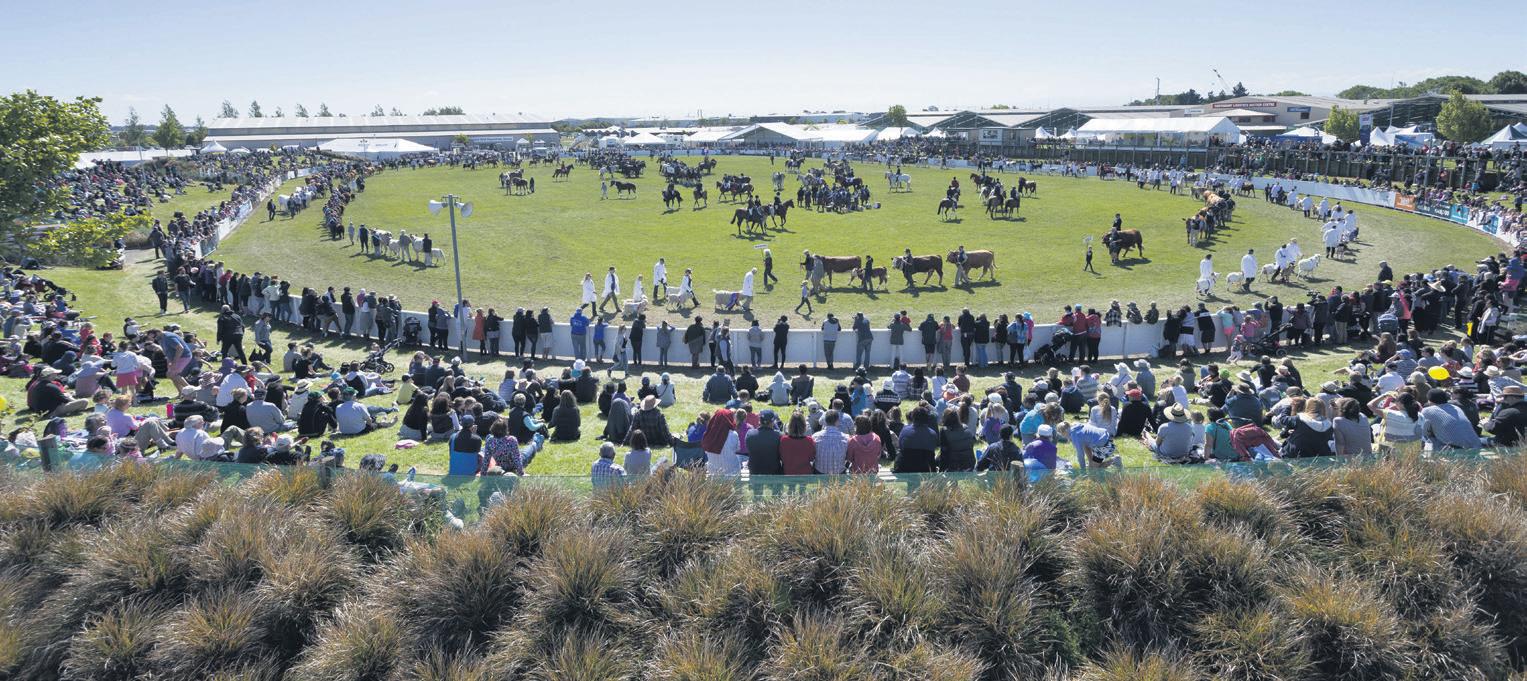
Show time: The Royal a&P Show will offer non-stop action, including equestrian events, shearing, woodchopping, dog trials, wool handling, and all major livestock classes, which for many competitors represents the pinnacle of agricultural achievement in New Zealand.
President of the Royal Agricultural Society of New Zealand Rachel Walker said they are excited to see a Royal A&P Show return to the South Island after a bit of a hiatus.
“We’re even more excited for a Royal A&P Show to be hosted by the Canterbury A&P Association in acknowledgement of the fantastic shows they have run over many decades and the vision they have for 2025 and the future,” Walker said.
“A maximum of two Royal Shows can be held in New Zealand each year, one in each island, and 2025 will be the first time that will be achieved with a Royal A&P Show in

Stratford and now a Royal A&P Show in Canterbury.
“With 66 Breed and Kindred member societies, both Royal Agricultural and Pastoral Shows of New Zealand will have a range of animals on show,” Walker said.
Christchurch Mayor Phil Mauger said the return of a Royal A&P Show is good news for Christchurch and Canterbury.
“These shows bring people from town and country together, supports local business, and celebrates everything that makes our rural communities so important to Canterbury and beyond,” Mauger said.
“We can’t wait to welcome everyone back for what’s going to be an incredible event.”
Phil Anderson co-owner of Event Hire, which stepped in to salvage last year’s show, said they are thrilled to again work with the Canterbury A&P Association and its experienced team of volunteers.
“We had a very tight timeframe to pull together last year’s Show, but it was a great success, financially strong and well-attended across all three days,” Anderson said.
“With more time to plan, and the Royal A&P Show status, we’re putting on a fullscale show this year.”


Visit haveyoursay.oriongroup.co.nz/cpp to share your thoughts.

To continue providing the safe, reliable and resilient power supply you depend on, we must invest more in our network. What we do now will create a positive future for generations to come. Let us know what you think about our proposed investment approach.








New Zealand farmers have always led by example, and the latest emissions data confirms that leadership is paying off.
The Greenhouse Gas Inventory shows agricultural emissions dropped another two percent last year, proof that farmers are on track to meet the ten percent reduction target for biogenic methane by 2030 without Labour’s failed He Waka Eke Noa.
This is clear evidence that practical, onfarm action is delivering real results. It confirms the decision to remove agriculture from the Emissions Trading Scheme was the right one and reinforces what many have known all along, the He Waka Eke Noa scheme that was never needed.
New Zealand farmers remain among the most carbon-efficient food producers in the world. That is something to be proud of, and it’s a position worth protecting. What this country cannot afford is to keep chasing emissions targets by blanketing productive farmland in pine trees or forcing cuts to stock numbers.
That’s why, as announced last December, the Government is currently in the process of introducing legislation this year to restrict
wholesale farm-to-forest conversions. We are also continuing to back farmers through a $400 million commitment to methane reduction research and innovation, supporting the sector to meet climate goals while keeping production strong – we will not be sending jobs and production overseas.
Alongside this, the Government is also moving to cut red tape on freshwater farm plans.
Cabinet has agreed to reduce the number of farms required to have a plan and to adopt a risk-based approach to certification. Small blocks will no longer be swept up in unnecessary bureaucracy, and existing industry programmes that already deliver strong environmental results will be formally recognised. There’s no sense in forcing farmers to prepare multiple plans for the same piece of land.
The updated regulations will give landowners flexibility to meet environmental obligations in a way that suits their farm system, and where appropriate, these plans will re-

place the need for separate council consents.
A shift is also underway from a blanket precautionary model to one that is risk-based and more permissive.
This is about trusting farmers to manage their land responsibly, while still ensuring the environment is protected and property rights are respected. We know farmers are best
placed to manage their land responsibly. The approach is simple: reduce unnecessary costs, unlock productivity, and back farmers to get on with the job. New Zealand’s primary producers have always delivered for the country – and they can be trusted to keep doing so when supported by practical, common-sense rules rather than bureaucracy for its own sake.








I was one of many who marched to remember those who fell during recent conflicts, and I was thrilled at the numbers of young folk who are now getting involved. But I do wonder if they really do understand the effect wars had on farming families.
Last century farming families had few machines and relied very much on labour, be it family or hired. Married couples living in a cottage and single men in huts being fed by the farm owners.
With the outbreak of war, literally thousands of those workers and sons of farming families vanished overseas to put their lives on the line for King and Country.
City dwellers had the same scenario but
with numbers to fill gaps, the effect wasn’t the same. Few would know that there was a new army formed to replace, or to try to replace, those who had gone overseas.
It was a formalized army of women who signed up, had their own uniforms and served wherever they were needed.
They drove tractors, did fencing, stock work and in fact anything that needed to be done. To me they were an invisible army that needed to be formalised. Without them primary production would have stopped, or if
not, would have been severely reduced.
Remember we were still feeding the UK as well as ourselves, plus the fact that any nation cannot suddenly stop breeding stock and growing crops.
While I refer to the ‘Land Army’ as invisible, it totally vanished when the wars were over. Once peace arrived, thousands of men came home in whatever state of mind but needed to be integrated back into society.
The Freemasons became an outlet for men who had lived and fought side by side,
shared the same horror and were close to become recluses.
In fact, that outlet being men only because the ex-soldiers were unable to communicate with those who remained was vital.
Those returning to the farming industry were disadvantaged even more by isolation geographically.
They were all heroes, and thankfully those who perished and those who survived will always be remembered and held in high esteem.
































Canterbury nursery worker Johnnie Clay and Jake Linklater, a nursery manager at Nova Trust in Christchurch, are in the running for the 2025 Young Plant Producer title.
] by Kent Caddick
Clay and Jake Linklater were named as finalists by the NZ Plant Producers Incorporated (NZPPI) for the Young Plant Producer competition, which showcases emerging talent in New Zealand’s plant production industry.
The finalists will compete in a two-day event at Lincoln University in late June, demonstrating their expertise in plant science, propagation, biosecurity, irrigation, business acumen, and public speaking.
Clay who grew up in the port town of Lyttleton said he has always had a love for plants and nature since he was young.
“I have worked full time at Southern Woods Nursery as a nursery person since 2022, where I have largely specialised in plant propagation and nursery,” Clay said.
“I am entering the Young Plant Producer competition because I think it would be a fun way to further develop my own knowledge of plant production and meet other young horticulturalists in the industry.”
Jake Linklater said it was his second
“I have had a rewarding career in the industry so far and hope to continue that well into the future.
“I have been in the wider horticultural industry eight years and nursery production specifically five years completing my certificates in Horticulture and Nursery Production levels 3 and 4 about three years ago.
“At Nova Trust – Nova Natives I am lucky enough to be involved with everything from propagation to dispatch which makes my role incredibly diverse. I hope to pick up some more knowledge and techniques through this competition I haven’t considered before.”
The pair will be hoping to repeat the efforts of another Cantabrian Anna England who took out the Young Plant Producer title in 2024, then went on to win the coveted Young Horticulturist title.
In the final the Canterbury pair will be up against Kirsten Phillips-Ong, an orchard technician at Plant & Food Research in Kerikeri, Yuong Chailakyang, Garden Centre and Business Development Manager at Plant Zone Direct and Tui Downs Nursery Kerikeri and Ezra
Plant man: Nursery manager at Nova Trust in Christchurch Jake Linklater is one of two Cantabrians in the running for the 2025 young Plant Producer title.

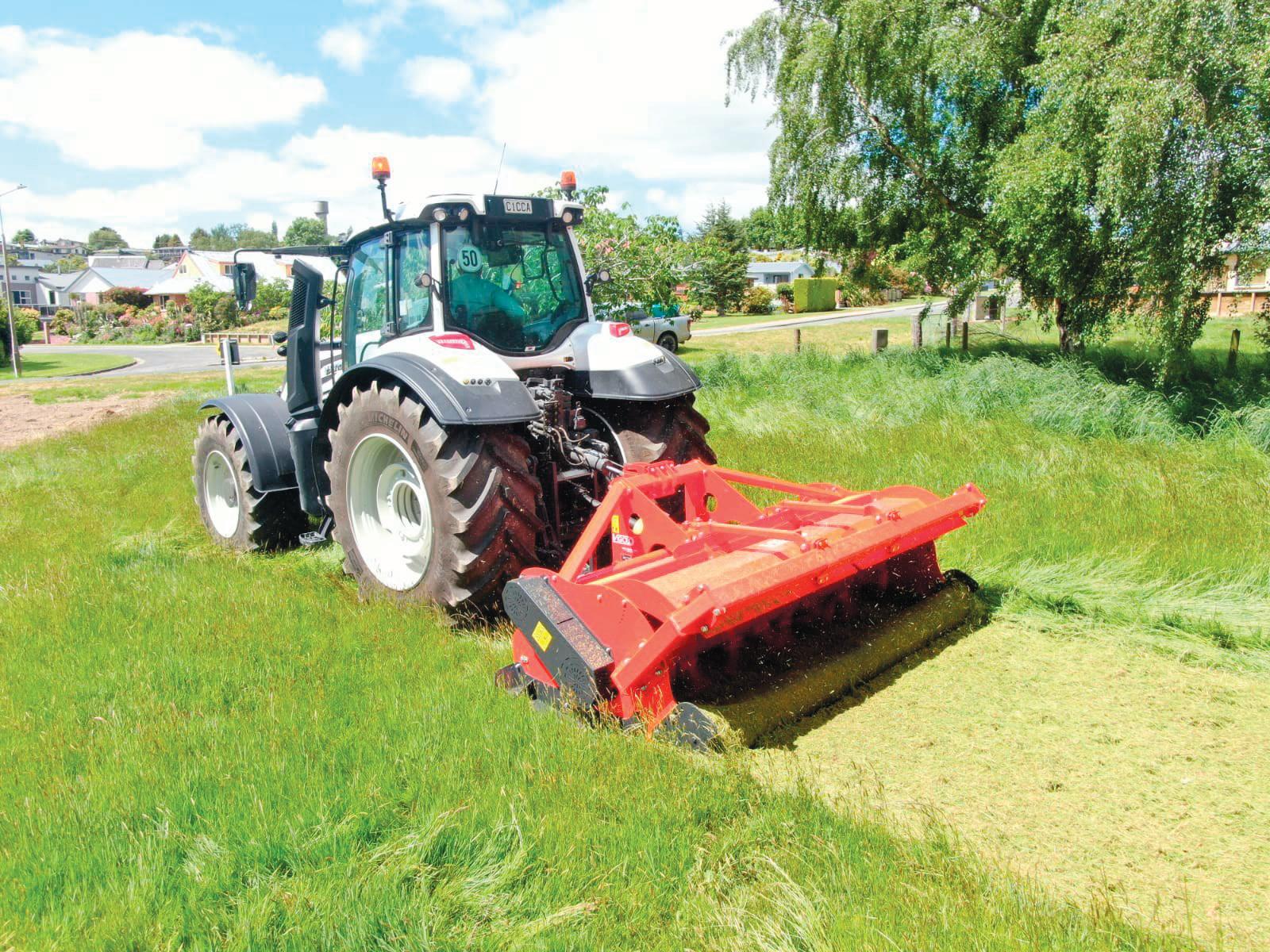

















When there is new evidence, good leaders change course, but this Government is refusing to listen.
The Parliamentary Commissioner for the Environment recently issued warnings about New Zealand’s overreliance on exotic forestry through the Emissions Trading Scheme (ETS).
Yet still, the Government presses on with its current approach, ignoring the advice of officials. It speaks of pure arrogance and will lead to worse outcomes for rural communities.
Six months ago, I raised concerns about National’s lack of a credible climate policy that is allowing the rate of farm-to-forest conversions to continue. It’s a problem for two main reasons:
It’s devastating for rural communities. As farms are sold off and converted to carbon forests, jobs vanish. It creates a domino effect where families leave, and local schools, shops, and essential services shut down, and a real toll on mental health and wellbeing.
The Emissions Trading Scheme (ETS) has become the Government’s only real climate lever, and it’s misfiring. The scheme rewards conversions of farmland into fast-growing pine forests because it can be more profitable than producing food.
The Commissioner for the Environment Simon Upton said New Zealand’s “tree planting scheme” is doing little to genuinely cut planet-heating gases, warning that the ETS is built on a “deeply flawed assumption” that carbon dioxide in the atmosphere can be offset by carbon storage in forests.
Emissions offsetting only works if the forests stay there forever to match the life of

] with Steve abel
] Green Party Spokesperson
] for Agriculture
the carbon emissions, but this isn’t guaranteed. Phasing forestry out of the ETS, as he recommended, would help address this issue. It would protect rural communities, stabilise the carbon market, increase pressure to invest in clean technologies, and refocus forestry to strengthen biodiversity, land stability and native reforestation.
However, instead of heeding expert advice, the Government has decided to trudge on with their weak rules. They’ve announced changes to the amount of farmland that can be converted to exotic forestry, due to come into effect in late 2025.
The new rules still allow up to 25% of a farm’s productive land to be converted and they keep the door open for landowners to have land use classifications reassessed.
These superficial tweaks do little to protect our farms and address the rate of farm conversions to forestry, and even worse, they have triggered a land grab.
We’re seeing a rush to convert farms before the October 2025 deadline hits. National says it wants to “strike a balance,” but their messaging isn’t matching the action.
The Government likes to blame Labour for the rate of farm conversions to forestry, but the facts don’t back that up. While we didn’t get it completely right, Labour’s One Billion Trees programme didn’t encourage planting on productive land, and in 2023 we gave local communities a say over whether conversions could proceed.
Now we have hard data that in 2022, when carbon prices hit record highs, and afforestation surged, most of it in fast-grow-

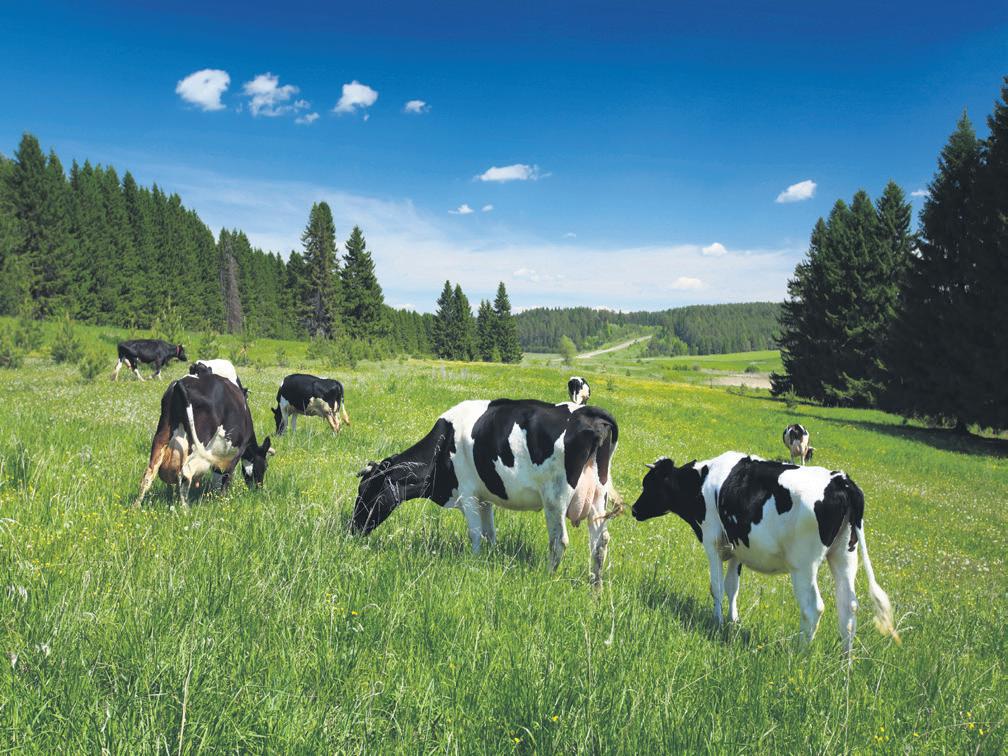
ing exotic species like pine, and this trend is continuing.
This is not a Government that is about the long-term survival of rural communities and the environment, rather, it’s a Government that is bending over backwards for landowners to gain a profit from the ETS.
The current trend of afforestation is unsustainable, and this Government needs to make the right choice by taking official advice to phase out forestry offsets and invest in landowner support to integrate trees into farms without wiping them out entirely. If they don’t change course now, we’ll be stuck with the consequences for generations.

‘The Government likes to blame Labour for the rate of farm conversions to forestry, but the facts don’t back that up.
As the unprincipled Treaty Principles Bill was defeated on the final day of a three week sitting block in April, something beautiful happened. Almost the whole Parliament stood and broke into a song of unity. Even the Speaker of the House Gerry Brownlee stood and sang.
Tutira mai nga iwi is a song that many of us were taught at school. The lyrics call for unity among all peoples. Tutira mai nga iwi –Stand together people. Tatau tatua e – all of us, all of us.
Ngatai Huata is daughter of the song’s author Rev Wirimu Huata. She says her father’s lyrics were a call for unity among people of all races and all creeds.
I believe that ultimately the anti-Treaty and anti-Maori policies of the Luxon Government will be recorded as a divisive blip in New Zealand’s history because national unity is an irresistible proposition. It seems to me that most of the National Party members, at least privately, believe this too.
Even in the midst of fighting against the attempt to cancel Maori wards, the under-
mining of customary fishing rights, and removal of mention of our founding agreement from legislation, we as a nation are moving towards a place of seeing that the quality of the relationship between the crown and iwi Maori is our foundation – the piles, joists, and cement in the ground on which the house of nationhood is built.
Honouring the Treaty is about upholding that founding relationship. Te Tiriti underpins a just society. It holds diversity as strength. It embodies a simple principle – that the power of our nationhood begins with the bond of respect.
It affirms the right to self-determination for Maori – the first New Zealanders. It is a living document that ensures dignity and belonging for all who make New Zealand home. It is, in the words of Moana Jackson, “a profound and visionary base on which to build a country.”
Among most New Zealanders we have a common state-of-mind that is much longer

than the life of a single government. It’s a thickening thread of unity across Maori and non-Maori for genuine honouring of the Treaty. That state-of-mind is powerful and, in my view, unstoppable.
As chief executive of Te Rananga o Toa Rangatira Helmut Modlik stated when he
greeted the hikoi arriving at Parliament last year, “You cannot divide us, we are already one.”
But true unity cannot be achieved without mutual respect. You cannot have a good relationship that denies the hard truths of our history or refuses the other party’s right to self-determination.
While we mostly don’t vote this way in Parliament, if we actually voted on our true conscience more often, I suspect New Zealand’s would be a more progressive legislature. While Luxon currently says that Maori ceded sovereignty, were the motion to be put to the whole House, on a true conscience vote, that Maori never ceded sovereignty, I believe the motion would win. And one day, I sincerely hope that motion is put.
When politicians from five of the six parties in Parliament stood together and sang that song of unity, Tutira Mai nga iwi, it felt like the New Zealand that, in our hearts, we all believe in.
New Zealand’s largest working farm Molesworth Station, which stretches from North Canterbury to Marlborough, has its cattle herd free of bovine tuberculosis (TB) for the first time in 37 years.
Molesworth Station, currently managed by state farmer Pamu (Landcorp Farming Limited), is New Zealand’s largest working farm, spanning 180,787 hectares in the mountainous landscape of the northern South Island high country.
The station has had a long history of bovine TB infection in its livestock, dating back to the early 1960s, with a continuous infected status since 1972, the longest in the country.
Bovine TB is a persistent disease, and this milestone has been achieved by large scale possum control to remove the infection from the possum population.
This has been coupled with a comprehensive livestock testing programme, patiently reducing the numbers of infected animals through on-farm skin and blood testing.
OSPRI manages the TBfree programme on behalf of the New Zealand government and the farming industry.
OSPRI chief executive Sam McIvor said Molesworth’s journey to TB freedom is a staged process, and this is a significant step along the path to TB freedom.
“Pamu and Molesworth people have been awesome partners in this eradication endeavour,” McIvor said.
“While we have completed possum con-
trol in the area, we still have some ongoing surveillance work of both wildlife and livestock to confirm that TB is finally gone.
“The achievement is a massive one, for Pamu, the dedicated people of Molesworth, especially manager Jim Ward, and all the OSPRI staff and their former colleagues from all those years back.”
Pamu chief executive Mark Leslie said Pamu seeks to innovate and ensure farming activities contribute positively to ecosystems and communities.
“The scale that Pamu has enables us to drive innovation for the benefit of the wider industry and our operations at Molesworth are no exception. The station has been home to several significant research projects on the reduction and elimination of bovine TB and control has involved innovating and trying different approaches,” Leslie said.
“I’d like to acknowledge Molesworth farm manager Jim Ward, who has been on farm for over half the period of infection. Jim has been a key driver of this status outcome but of course, it’s been a collaborative effort. The credit for this tremendous success goes to all the people and organisations who have worked for a very long time to make this TB result a reality.”
Molesworth farm manager Jim Ward said it has been a long journey, but a great journey.

“At one time TB was rampant. It was basically what didn’t have TB for a wee while there. We had TB in pigs, deer, goats, cattle, possums, ferrets, everything,” Ward said.
“The crux of this has been OSPRI, who all the way through had a mindset of not only ridding the property of TB but also coming up with best practice.
“Along the way they fine-tuned all their operation, with their consultation, the collaborative approach they’ve taken, getting information from the guys on the ground, the
pest operators we have, the scientific community, the contractors that utilise the work, the aerial application, and the helicopter firms that do the work.
“It’s a hugely professional operation and OSPRI have just been tweaking it all the way through.”
Information for this article was supplied by OSPRI New Zealand and Pamu Farms of New Zealand. For more search the video on Molesworth Station’s TB journey on youtube.
Following a surge in the second half of 2024, the golden run for New Zealand farmgate beef pricing has continued in the early part of 2025.
]Article supplied by Rabobank
And, according to a new report by food and agribusiness specialist Rabobank, with US demand for Kiwi beef forecast to stay strong, returns are expected to remain elevated throughout the course of the year.
In its recently released Q1 Global Beef Quarterly report, Rabobank says New Zealand farmgate prices in February were well up on five-year averages, off the back of stronger export demand and lower cattle inventory.
“Despite current uncertainty around tariffs, we expect the US will continue to dominate exports in quarter one 2025 and throughout 2025, and this will drive strong returns for New Zealand producers and exporters of beef,” RaboResearch senior agricultural analyst Jen Corkran said.
“US imported beef prices for 95 CL bull rose to NZD12.66/kg in late February 2025 which is more than 40% above the five-year average.
“Pricing may also be supported by lower New Zealand beef production volumes, with these likely to be down by around 5%-6% on quarter one 2024, the fallout of fewer beef calves reared two years ago.
“What is unusual for the start of this year is that pricing continues to sit above the spring peak and, as of yet, no decline has been seen.”
Corkran said the expected strong US demand continues the trend seen in 2024.
“Total New Zealand beef export volumes for 2024 were down 5% on 2023 volumes but the value of exports was almost exactly the same, at NZD 4.394 billion,” she said.
“The US trumped China to become the leading market by both volume and value in the 2024 calendar year.
“The US saw a 2% increase in export volumes to 183,000 metric tons (mt) with a 16% increase in value (to NZD 1.848 billion) for New Zealand. China, on the other hand, saw export volumes decline 27% to just under 148,000mt, with a drop of 32% in value YOY (to NZD 1.05 billion).”

“Overall, we expect global beef production in 2025 to be down 2% to levels that are 3% higher than the average volume of production in the five-year period between 2019 and 2023.
In addition to lower New Zealand production, the report says contractions are also expected in the four largest South American beef producing and exporting countries, Brazil, Argentina, Uruguay, and Paraguay.
“We expect Brazil, which accounts for 63% of South America’s supply and is the world’s largest beef exporter, will reduce its
production by 500,000 mt this year.” Corkran said this lower forecast for Brazilian beef production follows record high beef export volumes in 2024.
“Despite the anticipated production decline, Brazilian export volumes may be similar to 2024 due to an ongoing trend of declining consumer purchasing power locally and thus reduced domestic consumption of beef.
“This has led to export volume growth being the primary strategy for processors at the expense of the local market.”
However, the report says the new US administration is the major source of uncertainty for global beef markets over the months ahead.
“In the first few months under the new US administration, we have already seen significant uncertainty. Trump’s promised tariffs on Mexico and Canada were put into effect and then partially rolled back, while further warnings were also made about tariffs on imported food products,” Corkran said.
“Depending on what decisions are made, there is potential for disruptions to trade flows into the US, and, given its position in the global market, these are likely to spill over into global trade impacts.”
The report says global beef production levels are expected to contract in 2025 after peaking in late 2024.
“RaboResearch projects that quarter one 2025 production will be down 2% on the same period in 2024, with quarter two volumes down 3%,” Corkran said.










Trees are a defining feature of New Zealand’s landscape, often providing, aesthetically pleasing shade and privacy, however trees can also quickly become a source of tension or cause a dispute between neighbours and are surprisingly common.
Whether it’s branches or fruit overhanging a boundary fence, falling leaves, invasive roots, or blocked sunlight, knowing your rights and responsibilities is key to maintaining both your property and your relationship with your neighbour.
A tree (including its branches, leaves, fruit, and roots) is considered the property of the owner of the land where the tree is rooted. Even if parts of the tree extend over a boundary, the ownership of those parts does not change.
That said, as a neighbour, you do have certain rights when a tree encroaches onto your land. You are entitled to trim branches or roots that cross over your property, but only up to the boundary line. It’s important to note that the trimmings, including any fruit should be offered back to the owner, and if they decline, you are free to dispose of them appropriately.
This right does not extend to trespassing onto your neighbour’s land to carry out any




trimming work without their consent. Trespassing to trim the tree could result in a trespass notice being served on you.
Be careful with the chainsaw
While you do have the right to trim a tree that crosses onto your property, you also have a responsibility to do so without causing unnecessary harm to the tree.
You should ensure that your actions do not unnecessarily harm the tree. If your actions result in the tree becoming unsafe or dying, you could be held responsible for that damage, especially if the tree falls and causes injury or property damage.
Likewise, if the tree is protected under a local council’s tree protection rules, you may need consent before pruning or trimming even on your side of the boundary. Always check with your local council before doing any significant work.
If a neighbour’s tree causes damage to your property (for example, roots cracking your driveway or branches breaking your gutter-
ing), you can remove the parts of the tree that damaged your property, repair the property and apply for reimbursement from your neighbour through either the Disputes Tribunal (which can hear minor claims of up to $30,000) or sections 333 to 338 of the Property Law Act 2007which gives a District Court judge the power to award compensation or grant an order requiring the tree to be trimmed or removed.
Talk first, cut later
Although the rights regarding encroaching trees are well-defined, careful consideration should be had before exercising those rights. Whether you’re dealing with overhanging branches or invasive roots, understanding your legal position whilst maintaining good communication with your neighbour is key to avoiding unnecessary conflict.
A conversation with your neighbour may resolve a simple situation without the need for legal proceedings. For more serious cases or where trees pose a significant nuisance or danger, seeking legal redress through the courts may be necessary.



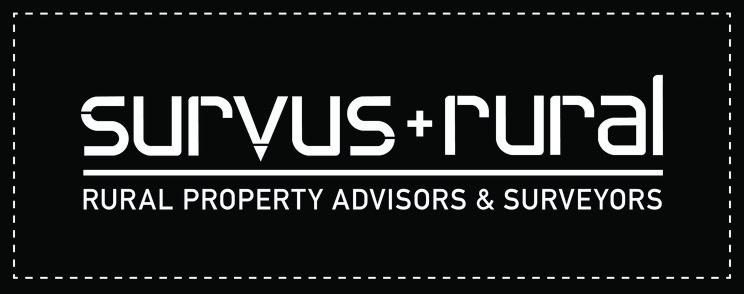

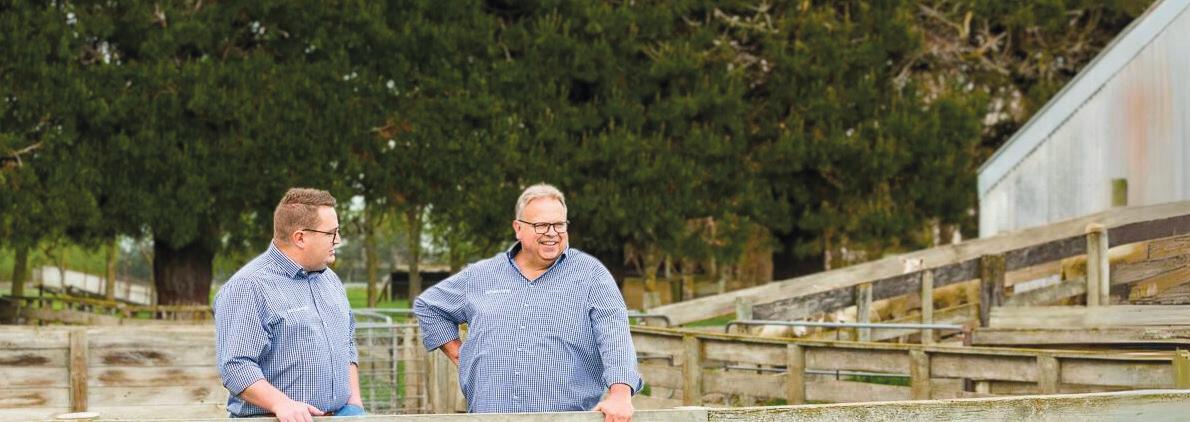








The first quarter of 2025 delivered mixed results for global financial markets, with one of the key drivers being renewed policy uncertainty.
Since his inauguration on 20 January, US President Donald Trump has pursued an aggressive trade agenda that has unsettled global markets.
Most recently, President Trump’s Liberation Day announcements marked a material escalation in trade tensions. A uniform 10% minimum tariff will now apply to all goods entering the US, including from New Zealand and Australia.
Much higher tariffs have been imposed on another 60 trading partners, including China, Japan and the EU. Canada and Mexico were initially hit with 25% tariffs on all imports (except for a 10% rate on Canadian energy products), though goods covered under the United States-Mexico-Canada Agreement (USMCA) are now exempt.
The effective average tariff rate on all US imports is expected to rise to around 25%, the highest level seen since the early 20th century.
The sharp increase in US import tariffs has prompted markets to reassess the outlook for US and global economic growth. While tariffs can serve political and revenue-raising objectives, they tend to raise consumer prices and dampen growth for both importing and exporting economies.
The volatile and unpredictable nature of the US administration’s tariff policy has added further uncertainty for businesses globally.
Financial markets responded negatively to the tariff news, with most major equity indices falling on fears of weaker growth in the US and worldwide.
However, US officials have indicated that the tariffs may be an opening position for negotiations, with the potential for lower rates than the initial proposals suggest. In the meantime, uncertainty is likely to remain a dominant market theme.
New Zealand looking brighter, but tariffs are a dampener
The New Zealand economy emerged from recession at the end of 2024, expanding at 0.7% quarter-on-quarter.
Other activity indicators are also pointing to early signs of recovery. For New Zea-

land, the direct impact from Trump’s tariffs will mean a 10% tariff on nine billion worth of goods exports to the US (including meat, dairy and wine) – around 0.2% of GDP.
But New Zealand is also a small, open economy with heavy trade exposure to countries such as China. The broader repercussions could be amplified by global supply chain disruptions and falling export demand if the global economy weakens as a result of trade wars.
On a more positive note, most of New Zealand’s key commodity prices – particularly meat and dairy – have been rising over the

When you are thinking about your investment options, talk to Forsyth Barr
To get personalised investment advice and portfolio management specific to your investing needs, talk to Investment Adviser Andrew Wyllie in confidence on (03) 365 4244 or email andrew.wyllie@forsythbarr.co.nz

past year, and the sectors are relatively well positioned to weather the tariff storm.
A weaker New Zealand dollar has further boosted export income when converted back into local currency. Additionally, around 40% of New Zealand’s export revenue from the US comes from services, primarily tourism, which are not directly affected by the new tariffs.
Overall, while the tariffs are a clear headwind, they are unlikely to totally derail New Zealand’s nascent economic recovery. Should growth soften further than previously forecast, the Reserve Bank of New Zealand

may opt to cut interest rates more aggressively to provide support.
This article was prepared as at 31 March 2025 and provides market commentary for the three-month period ending on that date. andrew Wyllie is an Investment adviser and Forsyth Barr’s Christchurch Manager. He can be contacted regarding portfolio management, fixed interest, or share investments on 0800 367 227 or andrew.wyllie@forsythbarr.co.nz. This column is general in nature, has been prepared in good faith based on information obtained from sources believed to be reliable and accurate, and should not be regarded as financial advice.






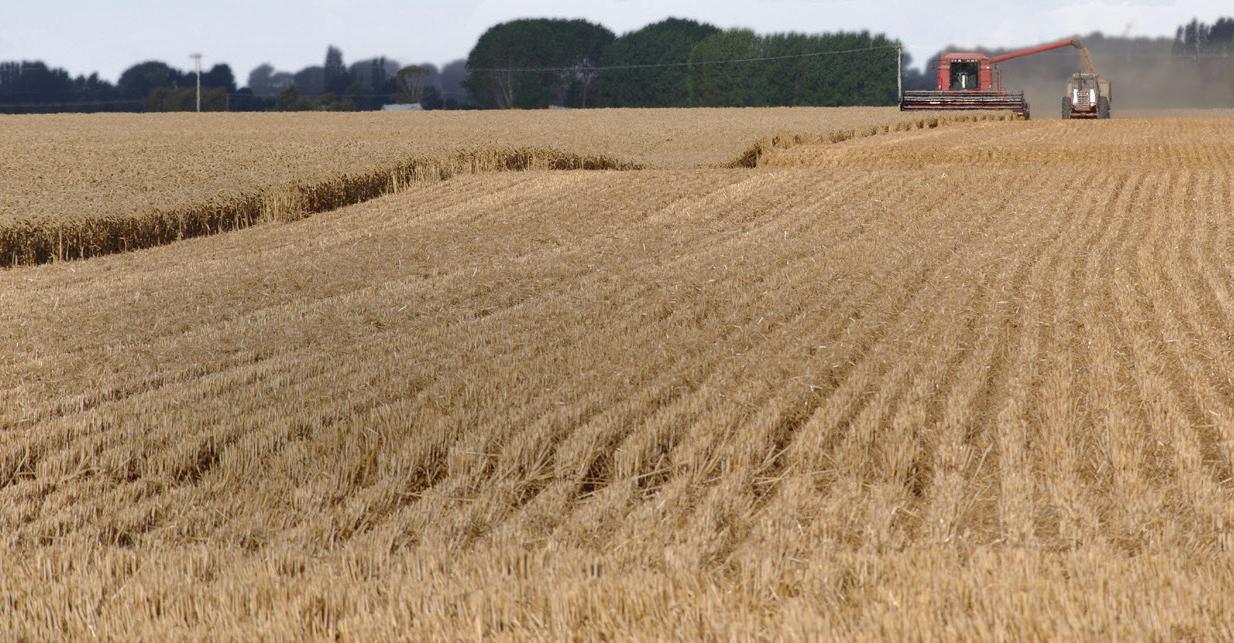
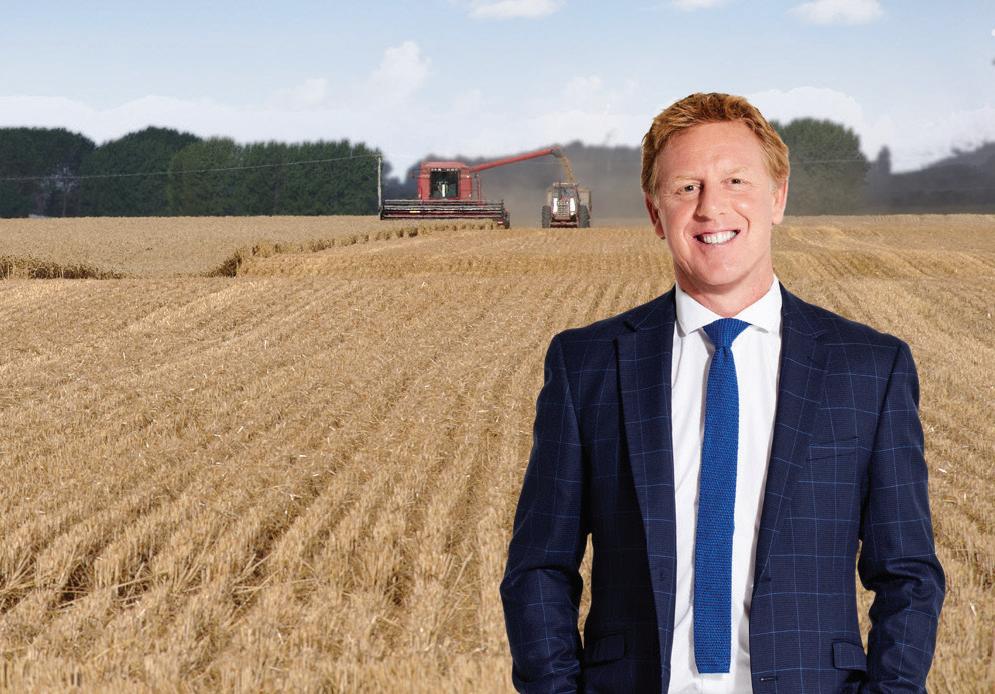












Joint pain from osteoarthritis can be anything from annoying to debilitating.









Earlier this year, someone contacted me about osteoarthritis in his knees and elbows.
He needed knee braces to get around and the pain prevented him from doing many activities that he enjoyed. He had resorted to cortisone injections for relief and was booked for another.
I started him on a double dose of my joint supplement. This gave him 1600mg of chondroitin sulphate, 1600mg of glucosamine sulphate and 400mg of the latest 100% water soluble curcumin (from turmeric) extract.
While glucosamine and curcumin are important, it is the chondroitin that generates the greatest impact on arthritis joints.

Chondroitin sulphate helps to reduce inflammation in the affected joints. It promotes the repair and maintenance of cartilage thereby improving joint function and mobility.
Research indicates that chondroitin sulphate plays a crucial role in supporting chondrocytes, the cells responsible for cartilage repair and maintenance.
Studies have shown that chondroitin enhances the synthesis of extracellular matrix components, which are essential for the structural integrity of cartilage.
Furthermore, chondroitin sulphate aids in reducing the activity of enzymes that destroy cartilage tissue, thereby preserving joint function.
The real test of any supplement is whether it works. I often ask clients to give me a pain rating out of ten. We then compare against this when we conduct our first review, typically after six weeks.
At the first review, my client noticed improvements. He was able to get around without the knee braces and he had cancelled the steroid injection.
I spoke to him the other day and he said he was much more comfortable and now back playing competitive sport. Feel free to request a copy of my Osteoarthritis programme.
John arts (adv.Dip.Nut.Med) is a nutritional medicine practitioner and founder of abundant Health Ltd. For questions or advice contact John on 0800 423559 or email john@abundant.co.nz. Join his newsletter at www.abundant.co.nz.
Whatever your funding level, Resonate offers you our best-in-class hearing aids: ReSound Vivia 9™
Whatever your funding level, Resonate offers you our best-in-class hearing aids: ReSound Vivia 9™
Bring your hearing back to life. Talk to a Resonate audiologist today to assess your hearing and find out if you are eligible for ACC funding to bring your hearing back to life.
Bring your hearing back to life. Talk to a Resonate audiologist today to assess your hearing and find out if you are eligible for ACC funding to bring your hearing back to life.
Contact Resonate 0800 327 360 | resonatehealth.co.nz
Contact Resonate 0800 327 360 | resonatehealth.co.nz








BEST BUY!
$99.95 for 3 bottles free freight or 1 bottle for $36.95 plus $5.99 postage 60 Capsules per Bottle
What is Bettaflex?
• Bettaflex is a joint support formula to promote healthy joint cartilage function.
• Bettaflex has 400mg (per capsule) of high-grade avian chondroitin, 400mg of glucosamine and 100mg of BioSolve® bioavailable Curcumin (from turmeric).
• Try Bettaflex for 3 months and see for yourself.
How can Bettaflex help?
• Chondroitin and glucosamine are building blocks of cartilage.
• Supplementation with correct levels can support healthy cartilage function and cartilage repair processes.
• New BioSolve® bioavailable curcumin helps joint function while gentle on the stomach.
• Research indicates that chondroitin is highly effective at 800mg daily.
John Arts comments:
“My latest Bettaflex formula includes BioSolve® bioavailable

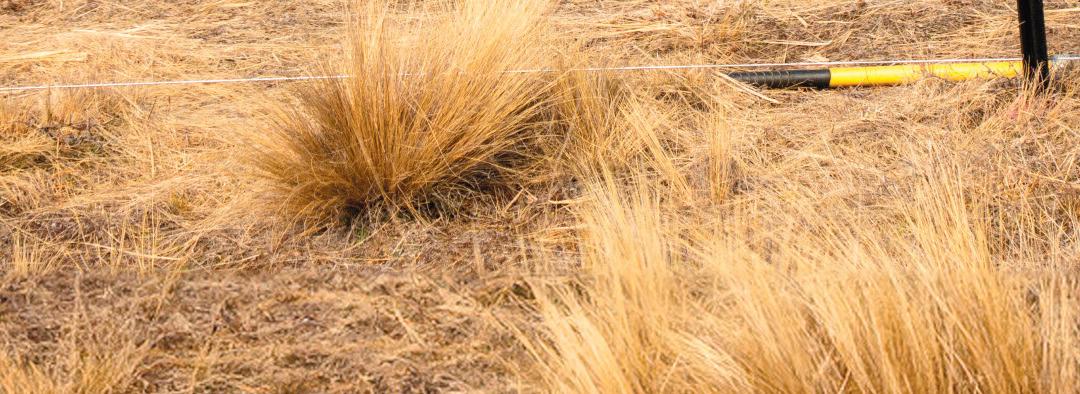


Farmstrong’s good-for-business programme uses the science of wellbeing to help farmers and growers live well and farm well, avoiding common mental health problems and physical injuries.
] by Nigel Beckford
Farmstrong helps people cope with the ups and downs of farming by sharing things they can do to look after themselves and the people in their business, especially during challenging times.
Farmstrong encourages farmers to ‘lock in’ good-for-business habits and thinking strategies by:
• Working with Farmstrong ambassador, rugby great Sam Whitelock, who promotes key messages, resources and events.
• Creating resources delivered via the Farmstrong website and face-to-face at events, workshops and online, based on the latest wellbeing science tailored for farmers and growers.
• Sharing farmer-to-farmer stories about what works, via rural media and social media channels such as Farmers Weekly, Dairy Farmer, the Country Radio Show, Orchardist and NZ Rugby magazines.
• Working and collaborating with rural organisations such as Dairy NZ, Beef + Lamb New Zealand, NZ Young Farmers, the Rural Support Trust, Farming Mums NZ, Dairy Women’s Network, Rural Women New Zealand, Horticulture NZ, NZ Kiwifruit Growers Association, the NZ Shearing Contractors’ Association, Neigh-

• Organising and supporting events that help farmers connect with each other, including comedy shows at rural halls, community fundraisers, sporting events and
Last year, more than 15,000 farmers di-


‘Just listening can be a huge help to someone



This season is again proving to be busy for Three Rivers Bale Feeders, as farmers continue to enjoy the benefits of these revolutionary bale feeders.
]
Advertorial by
] Three Rivers Bale Feeders
Owner Alistair Hay said the bale feeders only weighed 35kg, so were very easy to move by hand, plus, the feeders would not get stuck in the mud and would not rust – and no they don’t blow away in a Canterbury Nor Wester.
“As the feeders are plastic, there are no shocks when shifting them over hot wires and they don’t short out electric fence power if they come in contact.”
A ‘plastic bale feeder’ might sound a bit flimsy, but the Three Rivers Bale Feeders are far from it.
The feeders are constructed from very
high-pressure PE pipe, not simple alkathene, and all of the rings are uniformly joined via fusion welds.
“The uprights are stiff yet flexible polypropylene, the same type of plastic used in pipe joiners,” Alistair said.
“Being lightweight, flexible and smoothsurfaced, they are both stock and staff friendly.”
There are a variety of designs available to cater for cattle, sheep, deer, goats and horses.
The standard 6-foot (2m) version offers more options for bale size (4-foot baleage through to 6-foot straw or 6-foot square baleage). They have 16 feeding bays.


Being lightweight, flexible and smooth-surfaced, the Three Rivers Bale Feeders are both stock and staff friendly.
A larger 2.3m (7’6”) diameter feeder for use over large square bales has proved very popular in Canterbury – the advantage being the ease of moving these feeders compared to square steel feeders that must be moved with a tractor.
Kitsets are also available to reduce freight costs. A new product available is a bag holder for holding Plasback bags for bale wrap recycling.
Running a 1000ha deer, beef and dairy support property in Fairlie Canterbury,
Alistair has thoroughly tested these bale feeders over the past 12 years, as have the owners of more than 3000 bale feeders in paddocks throughout New Zealand.
“Three Rivers Bale Feeders are a seriously strong, durable and simple solution to feeding supplements,” Alistair said.
So if you also want a lightweight, strong and sturdy bale feeder, give Alistair a call on 0274 876-711 or check out www.balefeeder.co.nz



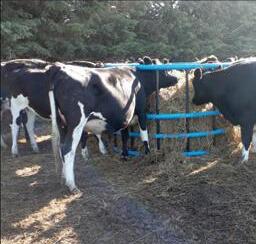

“Gladfield stock food has been a favourite at our farm for some time. We love the simplicity of the pellet form. Our chooks, calves, cattle, and sheep go crazy for the tasty brew! Thanks, Gladfield – we appreciate your innovation!”
– Vic, Rosaleigh Farm, Hororata
“Happy animals, happy customer, great accessibility, great product. Highly recommend!”
– David Marshall, Holly Farm, Leeston


Pick up available from Gladfield Malt, 721 Hororata Dunsandel Road, Dunsandel
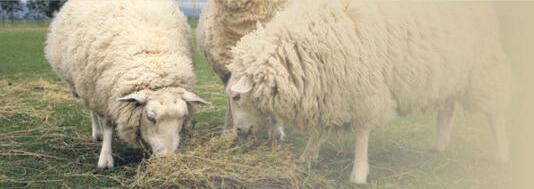

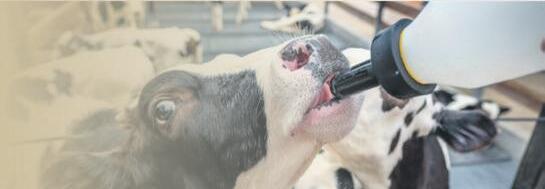
New Zealand is a farming nation known around the globe for its premium produce. In 2024, the New Zealand Feed Manufacturers Association (NZFMA) created and launched a popular new series of training workshops to deliver industry developed qualifications.
A key element of the workshops was that they were held on actual production sites to allow training in real life situations. The goal was to uphold the FeedSafeNZ standards used in accredited sites for producing high-quality feed for the animals we consume and export.
Last year, 1,060,758 tonnes of animal stock feed was produced in New Zealand. These workshops are just one of the ways the NZFMA helps ensure the feed production sector is as efficient as possible while ensuring quality is maintained.
NZFMA Executive Director Michael Brooks said the international grain market has been volatile with global events and rising costs.
“It’s been a tough few years for the industry, having to navigate uncertainty and adapting quickly to change, but I’m proud to say the industry is in good heart and the uptake of this training across the industry is a healthy sign of that.
“A strong programme like this benefits the whole agricultural sector and all those who purchase quality local feed for their animals.”
With over 20 years’ experience, industry expert and NZFMA facilitator Trevor Scoones helped lead the development of the course and has seen continued interest from the feed manufacturers he trains.
Scoones said the NZFMA Training Workshop has been a roaring success, with strong member sign-ups to the two-day workshop.
“In its first year, all workshops filled up quickly and this year it’s about 90% full al-

• Tailored blends to suit your herd
• Bulk delivery direct to farm
• Backed by expert nutrition support
• FeedSafe NZ-Accredited, quality assured

ready. The response has been overwhelmingly positive. We have people from all levels join our workshops, from entry-level operators to management and engineers,” he said.
Over two days, participants get hands-on practical training, visiting farm mills, as well as theory sessions, where the group get to share knowledge with one another and form networks.
The workshop is split into three modules, where they learn about processing raw materials, pellet production process, nutrition, quality management, food safety, health and safety and the industry’s quality assurance scheme FeedSafe NZ.
Having assisted in the development of the workshop, Seales Winslow National Operations Manager Tyler Stuthridge is a strong supporter and has already sent several of his staff to attend.
“These workshops are of great value to our business and customers. It helps us stay on top of our game, keeping up with good health and safety practices and achieving the best possible efficiency,” Stuthridge said.
“For customers that know to look for feed that carries the FeedSafe NZ accreditation


‘
Tthe NZFMa Training Workshop has been a roaring success, with strong member sign-ups to the two-day workshop.
Trevor Scoones NZFMA facilitator
mark it’s also reassurance that we are involved in training to maintain that.”
All members of the NZFMA are FeedSafeNZ accredited. They must undergo regular audits and staff training to uphold these high standards and maintain their accreditation.
The NZFMa hosts Training Workshops in both the North and South Island to be accessible to all members.














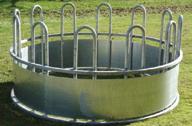


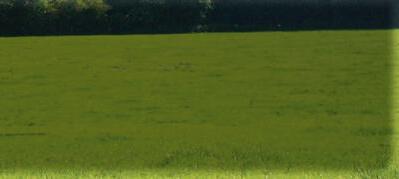




In most pasture based farm systems supplementary feed should only be used to fill feed deficits so that cows maintain energy intake and production.
There is no advantage to replacing good quality pasture with an alternative feed source or ‘balancing pasture’, therefore, supplements should only be used to provide energy when there is insufficient pasture available.
There is no evidence that supplementing pasture improves mating performance when there is sufficient pasture supply. If feeding supplements results in high grazing residuals, this is wasted feed and the reductions in future pasture growth and quality should be considered.
When supplements are required in a deficit situation they can help to optimise the area grazed each day, the rotation length, and the pasture residual.
The profitability of feeding supplements varies depending on the situation:
• The cost of the supplement.
• Wastage in storage and method of feeding out.
• The associated costs of supplement – these costs associated with feeding supplement can be 50% more than the cost of purchasing the feed, associated costs include capital, fuel/energy, labour, repairs and maintenance and depreciation.
• The degree of pasture substitution, which governs the response rate to supplement.
Supplement is more likely to be profitable where post grazing residuals are consistently under 1500kgDM/ha (78 clicks on RPM) without the supplement and do not exceed 1,500kgDM/ha with supplement.
If feeding supplements results in high grazing residuals, this represents wasted feed. It will reduce the immediate profitability of feeding and have ongoing effects through reductions in future pasture growth and quality which must be considered.
Autumn and winter supplement for BCS
Feeding supplement in autumn to milking cows is of limited use for achieving calving body condition score (BCS) targets unless cows were to lose BCS if not supplemented (for example insufficient pasture).
Cows selected for high milk production preferentially partition nutrients to milk production and not BCS gain.
The fastest way to achieve BCS gains is to dry cows off. The timing of dry off depends on your system, BCS gain required and length of the dry period.
If infrastructure exists to achieve high supplement utilisation when feeding dry cows during the winter, this can be a strategy to maximise lactation length while achieving BCS targets.
The viability of this strategy depends on supplement cost (incl. associated cost), BCS gain required and time available for BCS gain.

Optimal growth: When supplements are required they can help to optimise the area grazed each day, the rotation length, and the pasture residual.
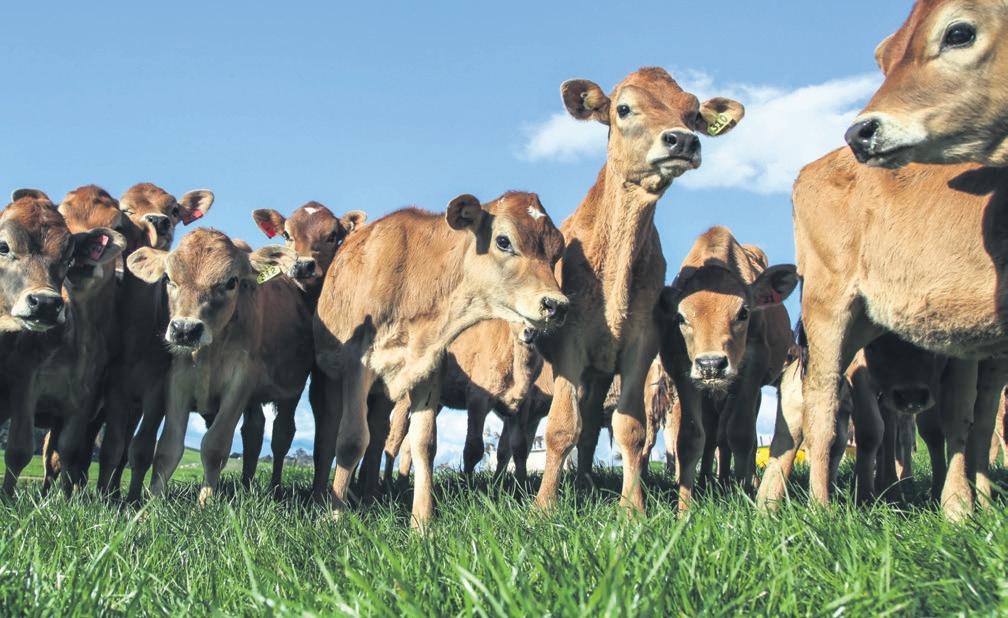

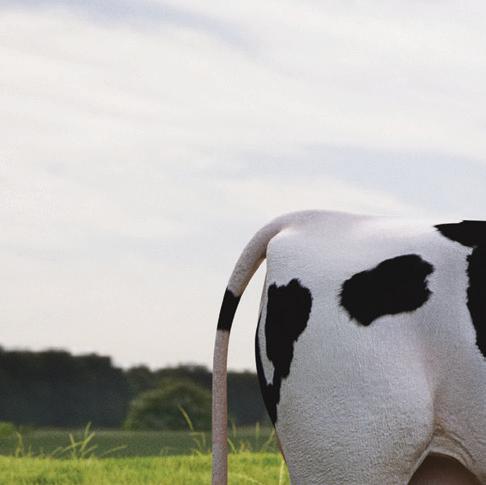



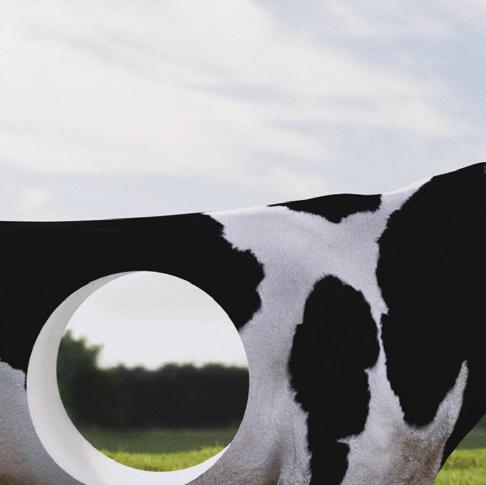
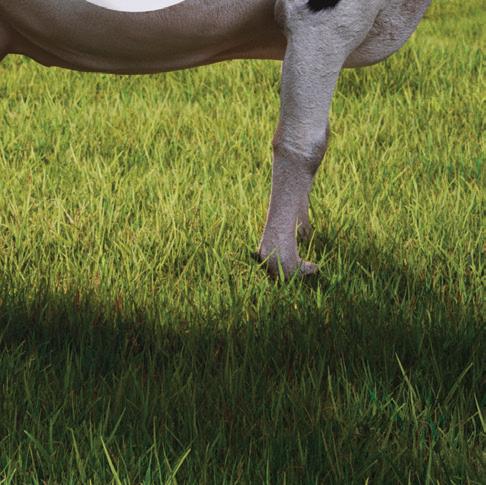
What are your cows missing?
Revitalise your herd with a precise mix of pelletised minerals and supplements that are easy to feed in-shed, 100% utilisable (with zero waste) without wasting another hour dusting. They can’t tell you, but they will show you what Vitalise adds to their health and production.
0508 678 464
cplimesolutions.net.nz/vitalise


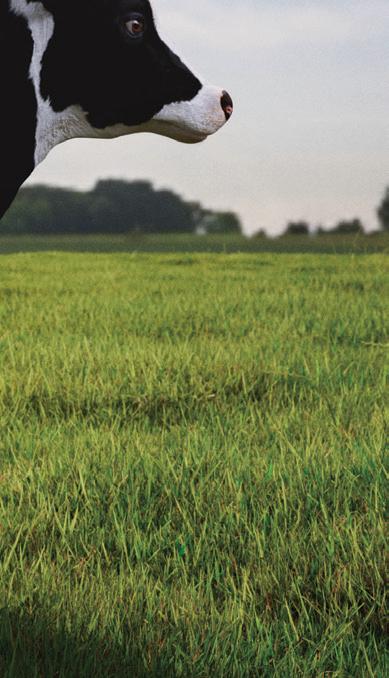


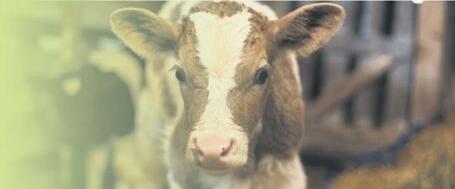
Cows close to calving, or springers, must be inspected frequently and most farms arrange for them to be checked at least every six hours and sometimes more frequently if conditions require it.
If calving is not proceeding normally, remedial action must be taken and a moving vehicle must not be used to provide traction to assist calving.
Check springers for signs of labour regularly, quietly and thoroughly and record what you observe.
Walk quietly through the springer mob –when cows are feeding is best. Don’t walk through the mob when cows are hungry and are waiting to be moved to fresh grass or a new break. Look for cows that are showing signs of labour.
Check cows at least four times a day. Your manager will set a routine for springer checks.
Check all areas of the paddock and, depending how good the fencing is, check the paddocks next door as well. Check drains, hollows, long grass, hedges – anywhere a calf could be sleeping.
Note the number of any cow or heifer that has started to show signs of calving, or has calved, and report to your manager so you can keep an eye on her progress.
Early signs of labour
• Swelling of udder can happen up to a month before calving.
• Milk dripping from teats.
• Mucus string from vulva (from plug of mucus that seals the vulva).
• Restless.
Calving will progress at different rates for different cows. Some may show all the signs whereas others may show very few signs.
Generally labour can be broken into two stages; preparation for labour and delivery.
An arched back shows the cow is restless and in preparation for labour. Other signs include: kicking and nosing at her side, restless straining, swishing tail in discomfort, tail raising, vulva swollen and flabby water bag protruding.
The preparation phase can take up to six hours in cows and 72 hours in heifers. Look for these signs when observing springers:
• away from herd and reduced appetite
• pelvic ligaments relaxed – vulva looks swollen and flabby
• dip between tailhead and pin-bones
• tummy less full as calf moves into birth canal/birthing position
• mothering other cows’ calves
• discomfort – swishing tail, arched back, restless, peeing, kicking and nosing at her side, tail raising
• straining/contractions
• water bag protruding.


Born day: Calving will progress at different rates for different cows with some showing all the signs whereas others may show very few signs.
Cows should take 30 minutes to one hour to calf – no more than two hours. Heifers should take two to three hours to calf – no more than four hours.
During a standard delivery the following process will occur:
• The cow starts straining and pushing – two feet are visible within the water sack.
• Once the feet are 10cm clear of the vulva the head has cleared the pelvis. The chest of the calf has not passed
through the pelvis at this stage and the umbilical cord is still attached so the cow is still providing oxygen to the calf.
• Once the head has cleared the pelvis, the cow may rest for a minute or two.
• Once the calf’s shoulders have cleared the pelvis, the birth will continue fairly quickly.
• The umbilical cord will have likely broken by this point and the calf will start to breathe on its own.



Matt Collier of Probiotic Revolution has long advocated for the use of probiotics alongside higher milk feeding rates.
] Advertorial supplied by ] Probiotic Revolution
“This approach prevents nutritional and disease scours, and boosts intake of meal, hay, and grass. The result is faster growth, with a survey showing calves reaching target weaning weights 11 days earlier,” he explains.
Matt sites an example of a Stratford farmer who used Calf Xtreme to change from feeding two litres twice a day to 7 to 8 litres once a day by day 10.
“Calves can’t normally get to this level of milk without getting scours but because these heifers are bigger their milk production compared with mixed age cow produc-
tion has lifted from 74% to 86%. That’s a lift of 50 kg milk solids per heifer”
Kapuka dairy farmers Brooke and Blair McKenzie rear 800 calves annually. Last spring, they experienced only two unexplained calf losses after they left their calf rearing shed.
With such a large rearing operation their calves still have some Rotavirus challenges every year in-spite of vaccinating cows.
They primarily manage these health issues by strengthening immunity through daily feeding of Calf Xtreme and when disease strikes the dose is lifted to three or fourfold.
Brooke emphasizes the role of nutrition in these results:
“Following Matt’s advice, we now feed 7

Reaching their full potential: Matt Collier of Probiotic Revolution advocates for the use of probiotics alongside higher milk feeding rates.
to 8 litres of milk once a day by day 10, instead of 3 litres twice daily. Hay consumption increased, and with faster growth and improved immunity, our calves are better equipped to handle rotavirus.”
Probiotic Revolution is committed to main-
taining these positive outcomes by strengthening its product formulations without increasing costs.
“There are still many farmers who can benefit from our products to raise stronger, healthier calves,” says Matt.
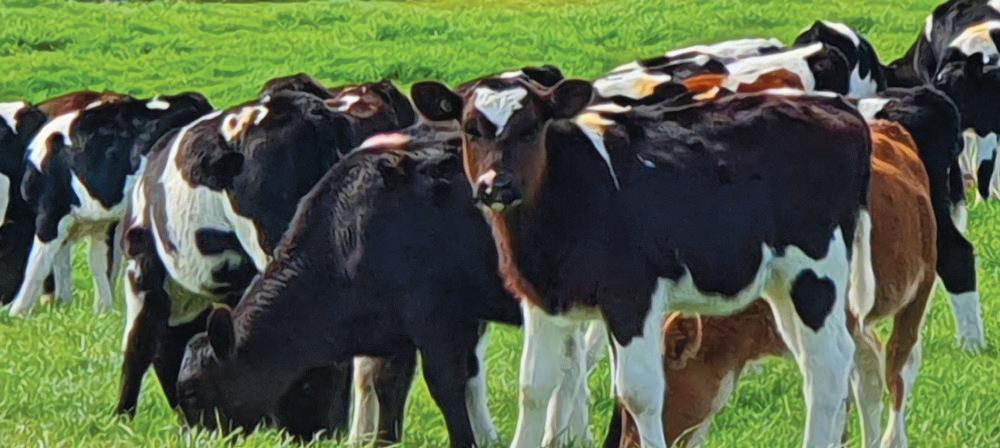





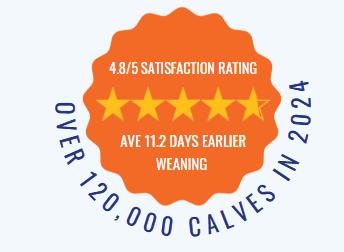
"I stopped using Calf Xtreme for 2 seasons ut then my milk records showed that the heifers had used Calf Xtreme on were averaging 40kg MS more than any other year" Rob, Canterbury
avera
ging
"Calves exceed growth rates and with improved immunity from Calf Xtreme, our calves are better equipped to handle rotavirus
Out of 800 calves, we only had 2 unexplained deaths" Brooke, Southland






Successful weaning based on calf weight and meal intake will help calves develop into healthy heifers.
Making sure a heifer is fully prepared before weaning reduces the chance she will need preferential treatment post-weaning.
Preferentially managing small groups of animals to try and “catch them up” to the group is time-consuming and can be difficult to manage, so it is best avoided by good early management.
Is the calf:
• Consuming the desired amount of feed? Is its rumen sufficiently developed?
• Meeting its weight-for-age target, based on its breed and/or the rearing system?
• At the minimum age for the rearing system?
• Able to compete within a group?
Rumen development
A calf’s rumen development is the most important factor to consider when making the weaning decision.
The only way this can be assessed is by measuring the amount of concentrate or pasture they are readily eating, which should be at least 1 kg/day of meal or 2 kg/day of pasture.
Calves should be supplied with clean water and feed for rumen development. Calf meal and high quality herbage together provide the energy, protein and volatile fatty acids necessary for rumen development and animal growth.
Grain have different fatty acid profiles and higher levels of butyrate which stimulates papillae growth, papillae increase the surface area of the rumen and aids in digestion.
Good quality hay can be used as a roughage if a grain-based meal is also being used, and should be offered from birth.
Calves given large quantities of milk will have slower rumen development. This is primarily because the milk satisfies their appetite, so they eat less forage and concen-





trates, which decreases the requirement for digestion in the rumen.
Any change to the quantity or type of feed needs to be measured. Just as it takes time to develop the rumen, time is key in transitioning from calf meal to a full pasture diet.
Farmer experience indicates that two week gap between each diet change (e.g. weaning off milk with meal concentrate to full pasture diet) will help transition heifers to a full pasture diet.
New-born calves have high dietary protein requirements, this requirement declines as they age. A higher crude protein intake should lead to higher growth rates. If using calf meal, look for products that contain 20%
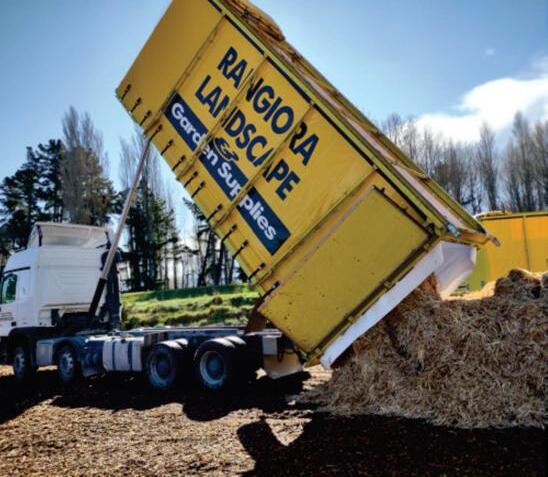






crude protein for calves on milk and 17% crude protein for weaned calves to meet total dietary requirements.
Sometimes animals do not thrive postweaning so weigh them within 7-10 days to make sure they have gained weight from weaning. If they’re not thriving post-weaning they may need continued access to calf meal, regardless of weight or age.
Weaning weight
Individual heifers should reach a minimum weight prior to weaning. No specific weaning weight has been defined by research.
The type of rearing system will affect the target weaning weight. Although, common
weights used for weaning are 70kg for Jerseys, 80kg for Fr x J Crossbreds, and 90kg for Friesians.
Relocating recently weaned calves
Relocation can result in growth checks or be a trigger for animal health issues including pneumonia, scouring and parasites.
Recently weaned calves are at particular risk as they will be undergoing changes in diet, rumen development, and moving from individual or small group care to larger mob management.
Relocation adds to the risk; the younger the animal, and the more recently they have been weaned, the higher the risk.




It’s been one of those seasons where the weather couldn’t quite make up its mind. Dry to start with, then wet, back to dry, and wet again for good measure.
] by Nick adams
Irrigation NZ
It’s fair to say irrigation systems around Canterbury have been put through their paces, both in terms of capacity and how long they’ve had to run.
Thanks to La Niña, many regions saw more easterly rain than usual. But places like the Amuri basin missed out, stuck in the rain shadow and dealing with low river flows at the same time. That meant restricted irrigation right when it was needed most. Thankfully, some decent recent rain and warm temps have turned things around.
Grass is still ticking along nicely, and feed reserves are looking better than expected for this time of year.
Soil moisture monitoring can help how you manage irrigation
In seasons like this, being on the ball with soil moisture monitoring is more important than ever. During the dry stretches, keeping moisture levels up makes a big difference—allowing crops to really kick on when the rain did finally arrive.
On the flip side, when the skies opened, pulling back on irrigation helps avoid waterlogging and nutrient loss.
That balancing act is becoming more of a skillset every year.
Looking ahead, NIWA’s forecast from April through to June is pointing towards normal to above-average rainfall, with warmer-than-usual temperatures. So while irrigation might not be needed much now, it’s the right time to get your gear sorted for winter.
Use the off-season to get on top of your irrigation set up
Make sure pivots and irrigators are parked up properly, well out of the wind and where they won’t get damaged. Any exposed pipework should be drained, and key gear like pressure gauges either removed or insulated to protect against frost. Don’t leave it too late.
If you’ve spotted anything that needs repairing or upgrading, now’s the time to get it on the to-do list. Have a yarn with your supplier early, get things priced up, scheduled, and parts ordered before the mad rush. Lead times can catch you out if you’re not ahead of the game.
It’s also a good moment to step back and think about how your system’s actually performing. Most setups have drifted from the original design over time. It happens naturally as things are built,
Maintain: The off season is the time to carry out maintenance, repair or upgrade any irrigation system.
tweaked, and adapted, but if it’s not doing the job the way it should, it might be time to look at improvements.
That starts with data. Good decisions rely on good information, but the whole data chain has to stack up, from how it’s gathered to how it’s stored, crunched, and presented. It’s easy enough to collect numbers, but are they accurate? Are they telling you what you need to know? Can you make confident calls based on what you’re seeing?
If any part of that process is off, it undermines your ability to make the right calls. As we all know, one or two good decisions, or bad ones, can make all the difference over a season like the one we’ve just had.

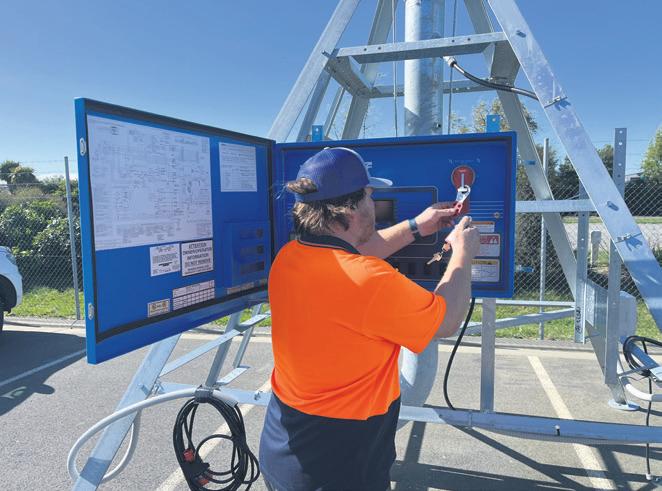




Selontra® Soft Bait provides rapid and environmentally responsible rodent management.
] Advertorial supplied by BASF Rodents are a major challenge for New Zealand growers damaging crops, irrigation systems, and packaging, while also spreading disease. Delays in rodent control can lead to serious financial and reputational losses.
Selontra Soft Bait delivers rapid results through a unique Stop-Feed Effect. Rats and mice consume a lethal dose in a single feed and die within 18 hours.
This speed baiting approach can control entire infestations in as little as seven days, significantly faster than standard rodenticides that can take months for total population control.
Quick rodent knockdown is critical in farming environments. Whether it’s orchards, farms, or packing sheds, fast
action limits crop contamination and infrastructure damage. It also reduces the need for prolonged traditional baiting programs, cutting labour time and costs.
Selontra’s key advantage is its lower secondary poisoning risk to non-target animals, including domestic pets, native wildlife, and birds of prey. This supports the aim for lower risk options while reducing environmental impact.
For farmers seeking an effective, efficient rodent treatment, Selontra Soft Bait will help protect produce, meet compliance standards, and support your business longterm.
For more information on Selontra Soft Bait, visit pest-control.basf.co.nz or contact your local BaSF representative on 0800 334 877.
Rodents such as rats are a major challenge for New Zealand growers damaging crops, irrigation systems, and packaging, while also spreading disease.














] Article supplied by ECan
The combination of wetter soils, deeper drainage, and potential surface flooding during the colder months can increase the chance of contaminants making their way into groundwater,– especially if your bore isn’t well protected.
“Many private bores are in good condition, but winter is a great time to double-check yours is up to scratch,” said Dr Elaine Moriarty, Environment Canterbury Water and Land Science Manager.
“Protecting your water supply protects you and your whanau’s health.”
Simple steps can make a big difference in keeping your water safe:
Bores should be fenced off from livestock by at least five metres and kept well clear of potential contamination sources like septic tanks, rubbish dumps, effluent areas, or
where chemicals and fertilisers are used.
Your borehead should be at least half a metre above the ground and securely sealed to prevent stormwater from getting into your supply.
Install a backflow preventer to stop contaminants siphoning back into the well.
If your property experiences flooding, heavy rain, snow, or long power outages, it is safest to boil any water before drinking it – and let anyone else using the bore know to do the same.
Get your water tested regularly: nitrate, E. coli, and even metals like lead, copper or arsenic can all affect water quality and health.
For more information on maintaining safe drinking water from private bores, visit Environment Canterbury’s drinking water page at ecan.govt.nz/ drinkingwater.







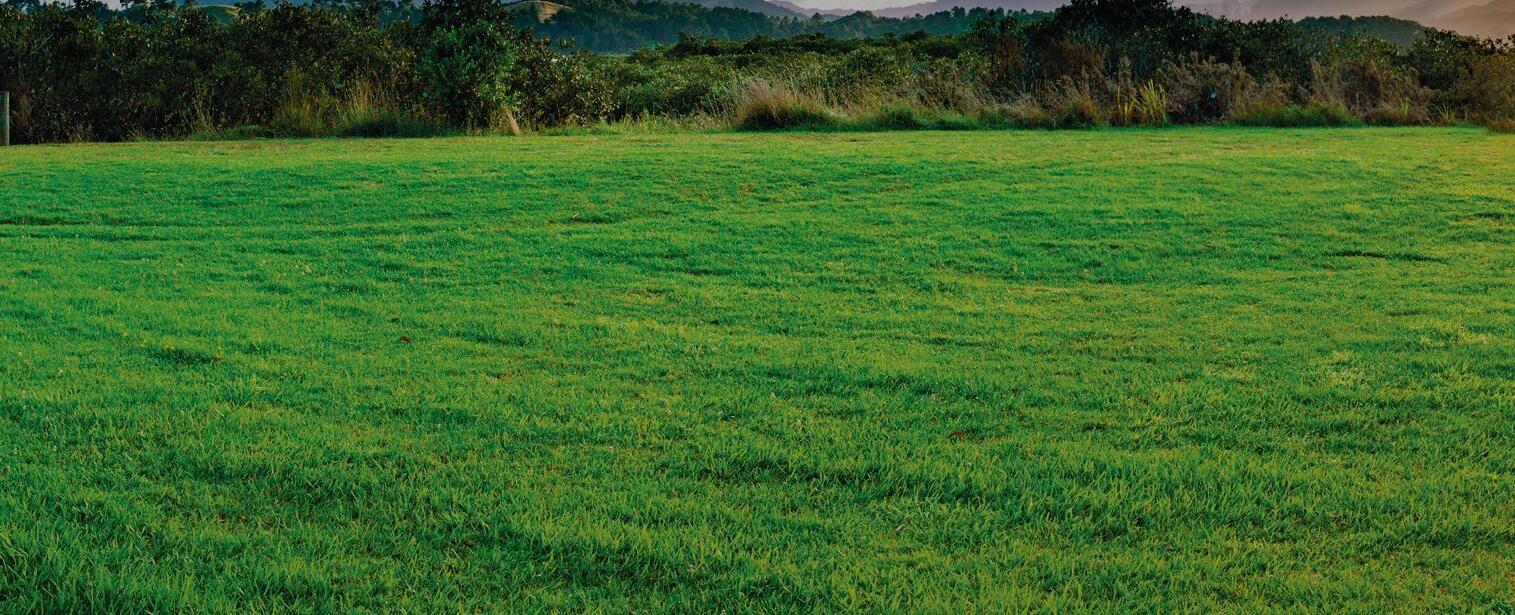

Protect your family’s health - test your drinking water regularly.
• Know your well’s location and depth.
• Protect your well head.
• Check the historical use of the land to understand the risks.
• Test your water supply by taking a sample and sending it to a lab for analysis. Find out more ecan.govt.nz/drinkingwater



Next time you’re in London, once you’ve eyeballed Big Ben, Trafalgar Square and Buckingham Palace, you’ve got to get out in the country. Why? Because there’s more to Ye Olde England than just London.
] by John Cooney
I mean, not far along the M4 are some of the sweetest, loveliest corners you can find in this “green and pleasant land”. And when you wander off the beaten track through leafy woodland lanes, you’re soon oohing-and-aahing at fairytale villages, thatch-roofed cottages, flower-smothered gardens, pubs with weird names, cathedrals with pointy roofs, medieval castles and knights in shining armour.
We fell in love with the honey-coloured village of Woodstock... felt the vibes of ‘Downton Abbey’ in the quaint town of Bampton... went walkabout in the exotic gardens of Hidcote Manor Garden... stretched our legs in the Kiftsgate Court, created by green-fingered women… and stumbled upon magical Broadway, its streets lined with horse-chestnut trees.
We saw more bloomin’ gardens than you could shake a gumboot at. And idyllic hamlets with names like Moreton-in-Marsh, Stow-on-theWold, Bourton-on-the-Water and Lower Slaughter.
Lower Slaughter sounded a bit grisly. But down the southernmost end of the Cotswolds we found Bath – famous for its Roman-built hotsprings spa. And it was here that a teahouse (dated 1482) caught my eye. It’s where those famous fluffy buns known as ‘Sally Lunns’ (with that slab of pink icing) were first baked! Yummm.











• Kiwi Hosts: John & Robyn Cooney, Midlife Madness Tours
• Departure Day: Sunday June 21, 2026
• Length of Tour: Garden Tour 20 days (plus André Rieu)
• Estimated Price: Garden Tour from $23,995 pp share twin (plus André Rieu)
• Included: airfares, hotels, meals, sightseeing
• Highlights: Woodstock, Blenheim Palace & Bampton, Hidcote, Kiftsgate & Broadway, Wiltshire, Castle Coombe & Bath, Port Isaac & Padstow, St Ives by the Sea & Lands’ End, Trebah & Lost Gardens of Heligan, Lyme Regis, Bournemouth & the New Forest, Sussex, Petworth & Leeds Castle, Sissinghurst & Great Dixter Gardens.
For more information: Phone 0800 323 333, or go to www.midlifemadness.tours and download our Garden Tour InfoPack & Booking Form.





Garden Tour price: $23,995 pp share twin •
André Rieu Concert extra (see InfoPack)































Since 1989, the New Zealand Dairy Industry Awards have been a benchmark of the New Zealand Dairy Industry, celebrating innovation, achievement and the best of dairying in New Zealand.
] by Kent Caddick ]
The country is divided into 11 regions for the NZDIA, with winners for each category going on to a national final. This year’s National Final will be held on Saturday May 10 in Tauranga
The 11 regions are: Northland, Auckland/ Hauraki, Waikato, Bay of Plenty, Central Plateau, Taranaki, Manawatu, Hawkes Bay / Wairarapa, West Coast / Top of the South, Canterbury / North Otago, Southland / Otago.
The award categories are:
If you’re currently aged 18-30 and employed on a dairy farm in a full-time position and haven’t been employed for more than 3 years on a dairy farm from the age of 18 either continuously or in total, then you may be eligible to enter the Dairy Trainee of the Year Award.
During judging you’ll be assessed on your general knowledge, your practical skills and some fun tasks to keep things interesting.
If you’re currently employed on a dairy farm in a full-time position and don’t have any equity in any dairy farming business and aren’t self-employed, the Dairy Manager of the Year Award could be for you.
The judges will benchmark you on several topics including people and personal, pasture and feed, livestock, farm, environment and sustainability.
If you’re a self-employed percentage sharemilker, contract milker, equity farmer or lessee, you could be eligible for the Share Farmer of the Year (SFOTY) award.
During the judging process, you’ll be assessed on a range of factors including people and culture, farm hygiene, health & safety and biosecurity, financial and business acumen, pasture and feed, livestock management, farm environmental and sustainability. Fonterra Responsible Dairying Award
The Fonterra Responsible Dairy Award (FRDA) recognises farmers/farm businesses who are doing positive and aspirational things in the dairy sustainability space, and therefore contribute to good stories about the dairy industry.
The FRDA is aimed at a farm business/ owner who owns 50% or more of a farm business, or a previous Share Farmer of the Year winner.

If you know a farm business or a farm owner doing great work in this space then nominate them for the Fonterra Responsible Dairying Award.
All confirmed nominees will be invited to attend their regional awards dinner and will be acknowledged as a FRDA nominee. The top three will be invited to nationals, where we will recognise the most outstanding contribution by awarding them the FRDA.
The ASB Alumni of the Year Award recognises previous NZDIA award winners and entrants who are no longer eligible to enter SFOTY. They may have progressed to farm ownership or more than 50% equity in a farm business.
The Alumni of the Year winner will receive up to $1 million of ASB Business Term Lending fixed at 1% per annum for three years. ASB’s lending criteria, terms and fees apply.
Fonterra & ASB First Farm Award
An exciting new initiative for first-time farm buyers, the Fonterra & ASB First Farm Award provides financial and strategic support to help the best in the industry successfully launch into farm ownership.
A collaboration between Fonterra, ASB, and the NZDIA Trust, the award aims to re-

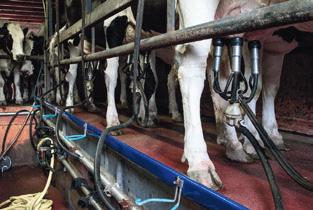


move barriers to farm ownership by offering financial backing, mentorship, and industry support.
The three winners will receive a stellar prize package including:
• Up to $1 million of ASB Business Term Lending fixed at 1% per annum for three years
• $20,000 of Farm Source account credit to invest in their first farm
• A tailored package from Fonterra to ena-
ble their transition into farm ownership including mentoring, enhanced support and special offers
ASB’s lending criteria, terms and fees apply. Lending must be used exclusively for purchasing a first farm. NZDIA and Fonterra / Farm Source terms and conditions apply.
For more information on the New Zealand Dairy Industry awards go to: www.dairyindustryawards.co.nz



While the category winners are feted at the New Zealand Dairy Industry Awards other entrants also receive acknowledgements for their work with merit awards being handed out at the regional finals.
] by Kent Caddick
The New Zealand Dairy Industry Awards (DIA) are supported by national sponsors ASB, CowManager, Ecolab, Federated Farmers, Fonterra, Honda, LIC, and Trelleborg, along with industry partners DairyNZ and MediaWorks.
The following merit awards were handed out in the two regional finals covered by Canterbury Farming.
Canterbury/North Otago Dairy Industry Awards
Share Farmer Merit Awards:
• DairyNZ – People and Culture Award: Richard Grabham & Nikita Baker
• Ecolab Total Farm Hygiene & Innovation Award: Martynas Sinkus
• Federated Farmers Leadership Award: Becs & Josh Dondertman
• Honda Farm Safety, Health and Biosecurity Award: Matt Suckling
• LIC – Animal Wellbeing, Recording and Productivity Award: Richard Grabham & Nikita Baker
• FarmRight Environmental Sustainability Award: Martynas Sinkus
• Trelleborg Sustainable Pasture Award: Richard Grabham & Nikita Baker
• ASB Business Performance Award: Becs & Josh Dondertman
Dairy Manager Merit
• CowManager Livestock Management Award: George Dodson
• Fonterra Dairy Management Award: Lauren McConnachie
• Craigmore Environmental Sustainability Award: Jack Taggart
• DeLaval Pasture & Feed Management Award: George Dodson
• Dairy Training Ltd People & Leadership Award: George Dodson
• Alexanders Planning & Financial Management Award: Levi Hart
• T H Enterprises Emerging Talent Award: Isabella Archer
Dairy Trainee Merit Awards:
• DairyNZ Practical Skills Award: Thomas Coates
• Veehof Emerging Talent Award: Elain Williams
• Central Feeds Farming Knowledge Award: Kate Schuurmans
• Dairy Holdings Communication & Industry Involvement Award: Caleb Smith

West Coast/Top of the South Dairy Industry Awards
Share Farmer Merit Awards:
• DairyNZ – People and Culture Award: Warric & Rachel Johnson
• Ecolab Total Farm Hygiene & Innovation Award: Warric & Rachel Johnson
• LIC – Animal Wellbeing, Recording & Productivity Award: Warric and Rachel Johnson
• Trelleborg Sustainable Pasture Award: Warric and Rachel Johnson
• ASB Business Performance
Warric and Rachel Johnson
• Cuffs Charted Accountants & Business Advisors Emerging Talent Award: Kieran Hamilton
Dairy Manager Merit
• DeLaval Pasture & Feed Management Award: Richard Exter
• Fonterra Dairy Management Award: Richard Exter
• Dairy Training Ltd People and Leadership Award: Richard Exter
Dairy Trainee Merit Awards:
• DairyNZ Practical Skills Award: Ros McCann
• Westland Milk Products Committee Emerging Talent Award: Talia Manson
• Honda Farming Knowledge Award: Ros McCann
• Greenfield Motors Communication & Industry Involvement Award: Ros McCann
Further details on the winners can be found at www.dairyindustryawards.co.nz
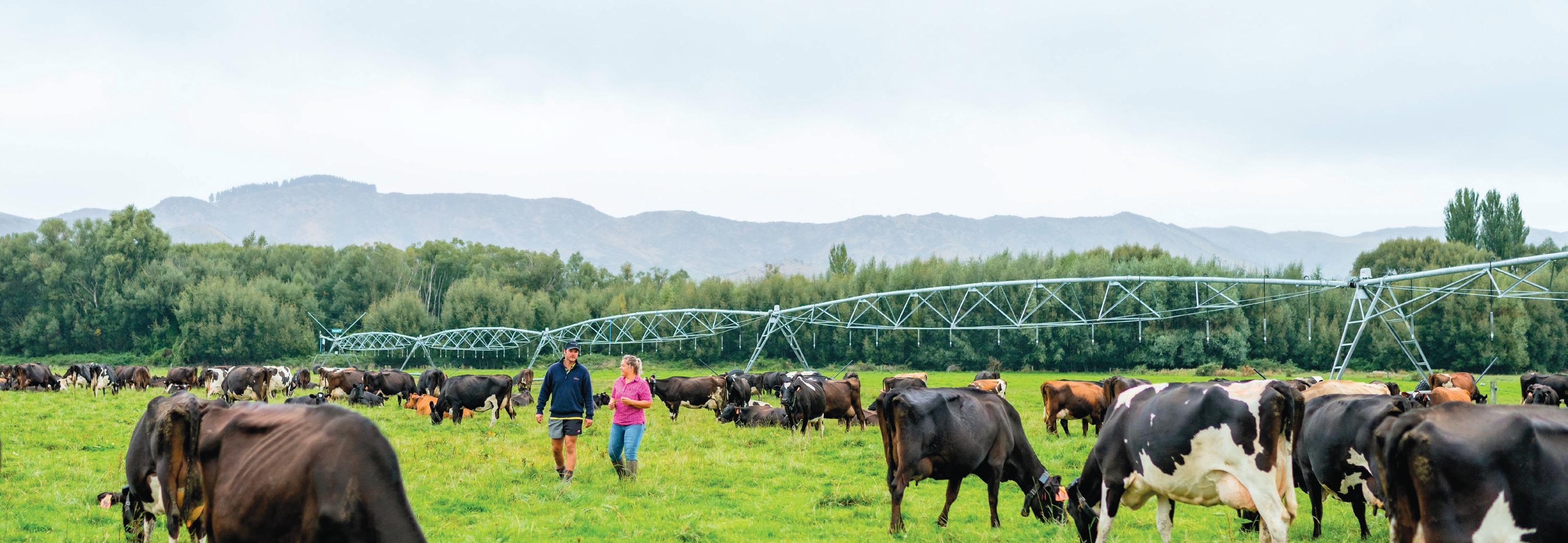



Moving Day is a big day in the farming calendar and requires good planning and communication to ensure success.
] Article supplied by DairyNZ
For some, Moving Day not only involves shifting a household of belongings, but it also involves relocating farm equipment and animals.
Early preparation is important, as is clear communication with your team, whether they are contractors, friends, or family, regarding your plans and expectations.
Careful consideration must be given to animal movements, and all farm equipment and machinery should leave the farm in a clean and disinfected state to manage health and biosecurity risks.
Set up for success
Ensure sharemilker/contract milker contracts are signed by both parties and a farm inspection with new farm owner, incoming and outgoing sharemilkers, farm manager, farm advisor has been planned.
Determine your staffing needs for your new farm, start recruiting for required staff and ensure signed employment agreements are in place, alongside signed service tenancy agreements for any employees who will live on farm.
Ensure anyone coming onto the farm hasn’t been overseas in the past 7 days to reduce the risk of introducing exotic organisms, especially if they have been travelling to countries with foot and mouth disease (FMD) and have been in contact with FMDsusceptible animals (e.g. farmed or wild cattle, sheep, goats, pigs, deer, llamas, alpacas).
Communicate regularly with the people on your existing farm and the people who will be on your new farm about your plans –
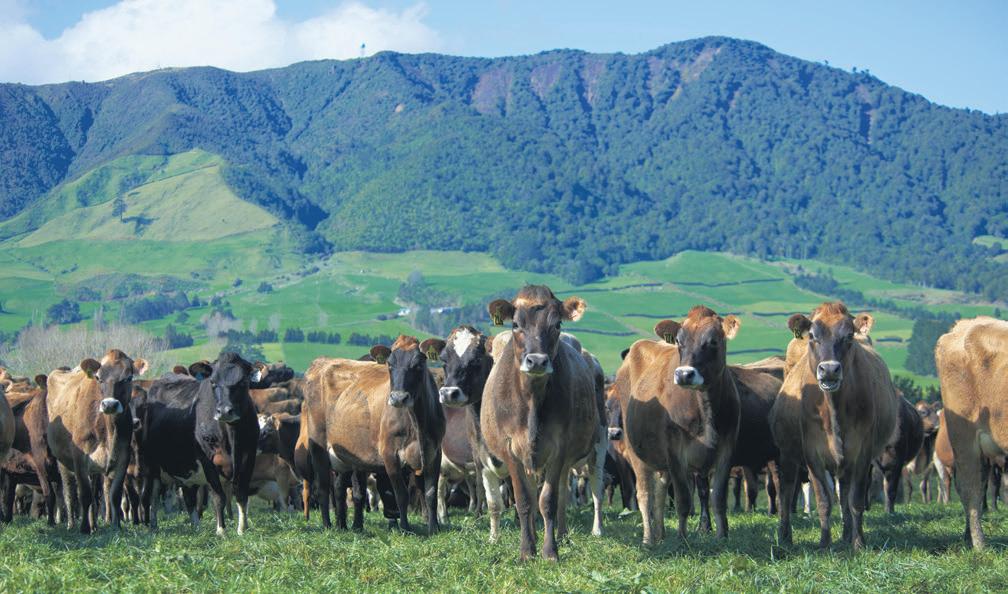
dates, key information etc. Ensure staff have enough time to be prepared, pack and clean in the weeks leading up to moving. If necessary, adjust rosters and hours of work.
Get in touch with your insurer well before the move – there might be more things to discuss than you think. It’s a good idea to know the physical address, building details, any plant or machinery details, and the details of your sharemilking or contract milking agreement if applicable.
Contact your utility providers (e.g. power, internet, etc) and ensure you will be disconnected and reconnected on the right dates. Take and record final power meter readings for all houses at both properties.

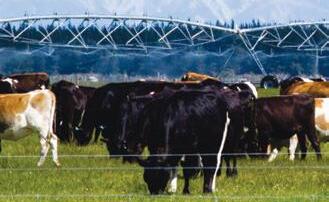
A farm owner is responsible for:
• Ensuring employees leave houses clean and tidy. Complete a house/s inspection for any maintenance required on current farm by end of April and arrange for any repairs and upgrades required. Check you comply with healthy home standards.
• Completing a final house inspection with existing tenant (sharemilker and/or employees) as soon as house/s are vacant.
• Considering whether drug testing of house(s) will be required.
• Confirming with departing and new tenants their departure and arrival times so there is no cross over between parties.
• Checking with the insurer what obligations you have in terms of inspections and what, if any, impact this could have on your insurance cover.
Sharemilker and contract milkers are responsible for:
• Ensuring that their own house and their employees house/s have been left in a clean and tidy state to the standards agreed in the contract.
• Consider whether drug testing of house/s will be required. If yes, arrange contractors and discuss with farm owner.
• Completing house/s inspection with employees and then farm owner as soon as house/s are vacant, and complete house/s inspection prior to moving in on new farm.
Immediately discuss any issues with farm owner, agree a plan and document this.
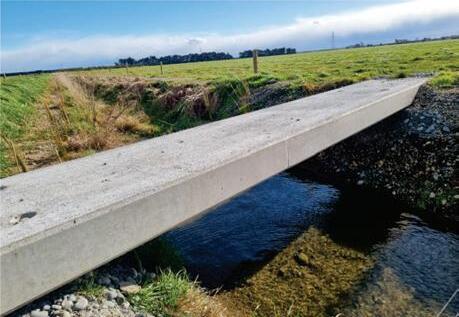




DairyNZ has set a new levy rate of 4.5 cents per kilogram of milksolids from 1 June 2025 and aims to keep the levy at no more than this rate for a minimum of three years.
Article supplied by ] DairyNZ
The decision to adjust the levy for the first time in 16 years follows a comprehensive consultation with farmers where DairyNZ held meetings across the country and received more than 1500 formal feedback submissions.
DairyNZ Chair Tracy Brown said the new rate will allow DairyNZ to continue supporting the country’s dairy farmers to lift profitability and sustainability through science and research, policy advocacy, and extension behind the farm-gate.
Brown said levy payers provided valuable feedback, and the adjustment strikes a balance between the different views of farmers while providing certainty for a minimum of three years.
“Some farmers endorsed our work and want us to do more, especially across science and research, while others wanted a stronger
commercial focus to keep costs down, or the levy rate to remain unchanged.
“In making the decision, the Board carefully considered the feedback, how best to support farmers and provide certainty into the future, the financial sustainability of DairyNZ, and sector resilience.
“Importantly, I want farmers to know that we’ve heard their feedback on areas important to them. We will deliver improvements including in farmer engagement, transparency around levy spending and return on their investment, and our science and research programme to keep the focus sharp on productivity, resilience and sustainability.
“Our vision is to ensure the levy is the best investment of every New Zealand dairy farmer. This commitment underpins everything we do. We will share more details about these improvements over the coming months.
“Dairy farmers can be confident DairyNZ will continue to back them with the right tools and support to ensure they have a positive future and can grow their businesses.”
Brown said the global demand for sustainable milk, ongoing global trade and shipping disruption, and the Government’s export growth agenda all contribute to the need for an agile and resilient dairy sector, and a strong industry-good body to support farmers.
“At the new levy rate, DairyNZ will maintain its focus on three strategic priorities over the next three years: accelerating on-farm productivity, powering more adaptable and resilient farms, and enabling sustainable and competitive dairying.”
Brown said DairyNZ’s management team continues to apply a more rigorous commercial focus across the organisation, including cutting costs by $5.5m in the past year and refocusing efforts on highvalue projects.




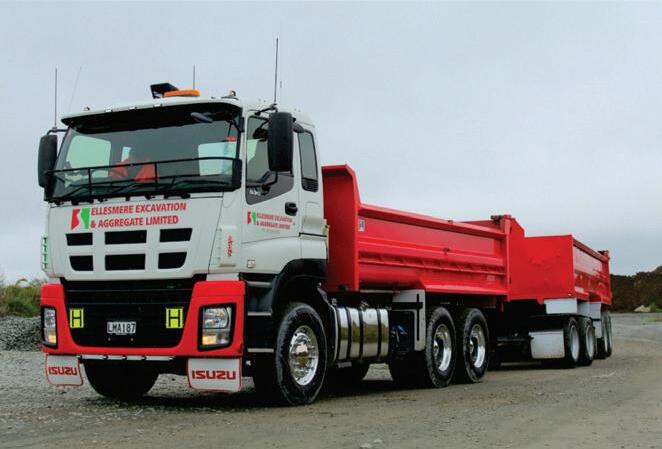










After a hard day’s work, your dogs deserve the comfort of warmth as much as we do and, at Southern Cross Dog Kennels, we pride ourselves on building strong, robust and practical kennels that are designed to last the lifetime of many dogs.
] Advertorial supplied by ] Southern
Our products are not light or made from minimal materials but engineered to withstand the might of New Zealand’s harshest weather, keeping dogs warm on those freezing nights and bringing strength, durability and comfort together to produce products the Southern Cross Dog Kennels team are proud of.
Our range of products starts from the simple dog bed up to the large multi-bay motels for commercial use.
We pride ourselves on being one of the very few on the market that produce dog kennels with fully insulated sleeping areas and we believe this is a great advantage to have over other products on the New Zealand market. The company also supplies Colorsteel as an option, along with the most popular insulation option, NZ Wool (Terra Lana)
The birth of Southern Cross Dog Kennels originated from building custom design kennels and we continue to do so now, even after developing set products, our custom designs can see all your unique needs met, commercial or domestic, and we can build a kennel system that suits your needs.
We pride ourselves on supporting the hard working (and not-so-hard working) dogs of New Zealand, in turn we reward them with warm, dry and comfortable housing.
In recent times, Southern Cross Dog Kennels has branched out with a sister company, Homestead Products, which has started creating many different products to suit urban and rural properties.
The range of products extends from raised garden beds, rustic wooden gates, kitset sheds, chook houses and even kitset Maimais. In more recent times we have been supplying custom steel art and garden decor.
Southern Cross Products range includes raised garden beds, rustic wooden gates, outdoor furniture, kitset sheds, chook houses and even kitset Maimais.


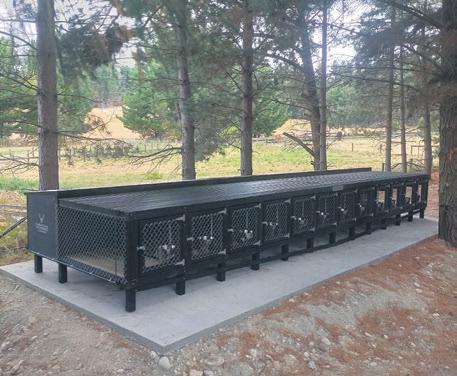




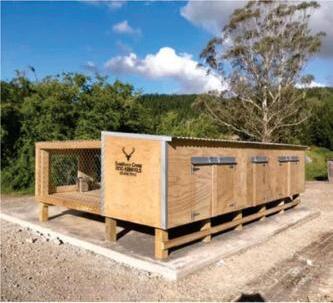

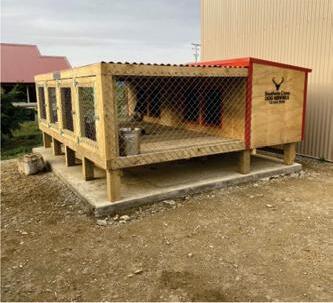

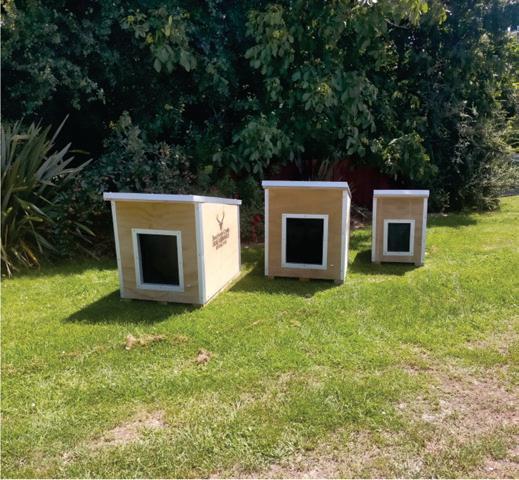



Career paths come in many different forms, and for some Canterbury teenagers, their journey is being shaped by hands-on experience in a sector they are passionate about – dairy farming.
] by Kent Caddick
Eighteen-year-old Matthew Fox, a 2024 graduate of Lincoln High School, was eager to find his next opportunity when he discovered the NextGen Dairy Farmers pilot programme, launched last year by Dairy Training, a subsidiary of DairyNZ.
“I wasn’t raised on a farm, but my grandparents do mixed farming with sheep and crops, and my aunt owns a dairy farm, so I’ve had some exposure,” Matthew said.
“This made me realise that I wanted a career outdoors, which is what attracted me to farming. I really enjoy seeing the animals happy, and knowing I’m part of New Zealand’s primary sector,” he said.
“My host farmers are dedicated to teaching me, taking the time to explain things, and providing feedback when I need to improve. It’s a supportive learning environment.”


The NextGen programme is a NZQA-accredited initiative aimed at Year 12 and 13 school leavers, providing a solid foundation for a successful career in dairy farming. It is one of seven training courses offered by Dairy Training, the others focused on enhancing the skills of workers already in the sector.
The programme began at the end of 2024 and includes a three-week pre-employment training, followed by six months of on-farm employment with weekly training sessions and ongoing pastoral care and support.
Hamish Hodgson, Head of Dairy Training, said the programme was designed based on farmer feedback, with pre-employment training focused on what farmers believe new entrants to a dairy farming career should know.
“We set out to see how we can promote pathways into dairy from high school, and we formed this programme concept alongside farmers. It was important to ensure that stu-
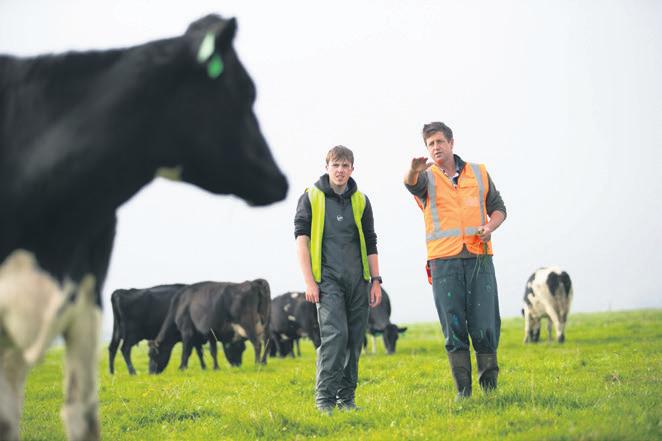
dents are set up for success, both on and off the farm,” Hodgson said.
“Dairy Training Limited is focused on offering practical, easy-to-access training that is designed with dairy farmers, for dairy farmers, to support the long-term success of our sector.
“We have seen this approach to training go from strength to strength, with course enrolments having increased by 500% over the past five years.”
Applications for the next intake of the NextGen Dairy Farmers programme are now open, with applications closing on May 30. The programme is seeking Year 12 and 13 students interested in pursuing a career in dairy farming, as well as host farmers in Canterbury willing to support the development of future dairy farmers.
Information for this article was supplied by DairyNZ. To learn more, visit dairytraining.co.nz/next-gen








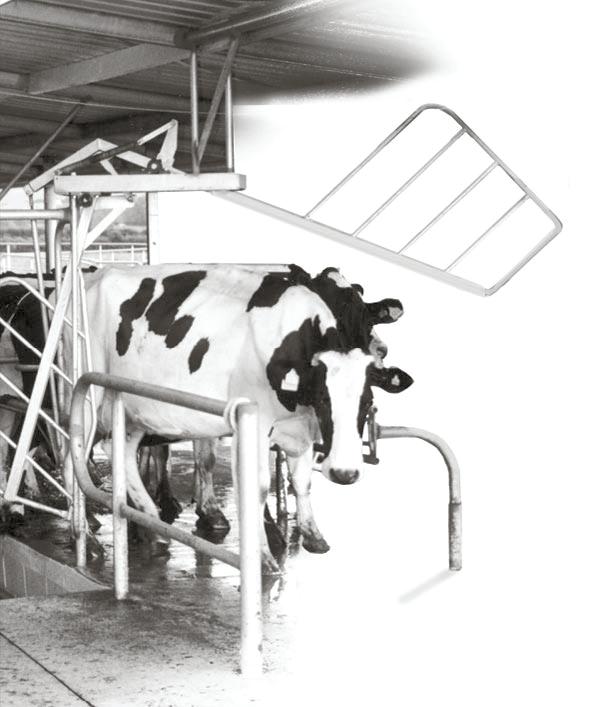











] with Peter Burton





For those of us growing up through the 1960s and 70s it seems bizarre to contemplate a future where pastoral farming is a curiosity carried out in remote country enclaves visited mostly by tourists.
It wasn’t until the late 1980s that pastoral farming was no longer considered ‘the backbone of the country’ and urban electorates suddenly determined the make-up of government.
New Zealand had urbanised with the views of the rural community secondary to those of city dwellers. It was a seismic shift in the evolution of the country and its effect was largely lost in the accompanying turmoil of financial restructuring.
Research Institute funding was savagely chopped with extensive loss of knowledge and expertise. The ‘user pays’ mantra adopted meant long-term research was replaced by short term industry funded projects.
It is a real credit to sheep and beef and dairy industries that they have prospered since, although we may ponder on where we might be now had a clear vision and accompanying plan been implemented by subsequent governments.
A major concern for the future is environmental pressures and how they might impact on the industry.
The supply of clean fresh drinking water is increasingly under the microscope and although the planting of waterways and fencing of streams has been positive, levels of Nitrate-N in groundwater steadily increase.
Dr Graham Sparling in his Norman Taylor Lecture in 2004 stated that New Zealand was in the top of the OECD in one respect,
we were the country with greatest proportion of our GDP coming from primary industries.
He went on to state, “Soil biology may be able to help us clean our wastes and protect our streams and rivers. The soil biological process of denitrification is the only process whereby we can get reactive nitrogen from soil and water back into benign nitrogen gas… but we seem to be headed in the opposite direction, adding ever more nitrogen and phosphorus to our soils”
The argument is that when less synthetic nitrogen and soluble phosphorus is applied production declines.
The work over the last 25 years by Functional Fertiliser and supporters has proven that by creating the conditions that favour clover the dependence on synthetic nitrogen can be broken.
A comparable farm trial undertaken by Dr Guna Mageson of Scion Rotorua recorded a 30% increase in pasture yield with a 70% reduction in Nitrate-N lost to groundwater.
The transition process can be seamless without any initial loss in performance, with the immediate benefits of lower fertiliser and animal ill-health costs.
Longer term the added benefits of more total pasture with more even growth throughout the year are enjoyed and appreciated.
For more information call Peter on 0800 843 809, or 027 495 0041.
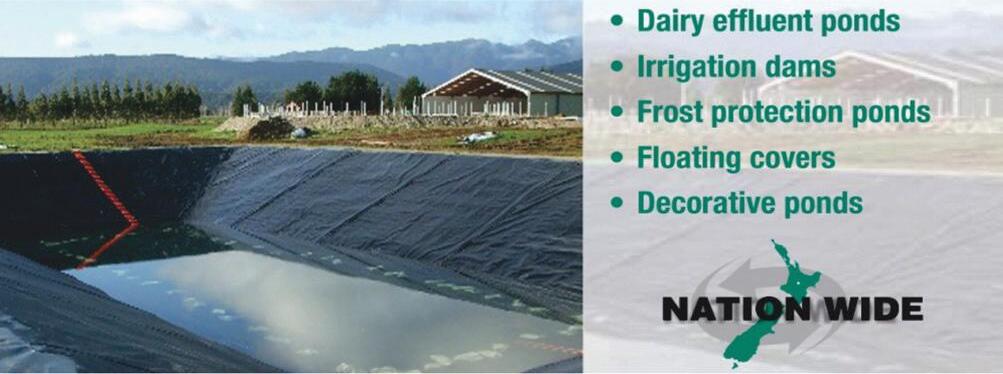

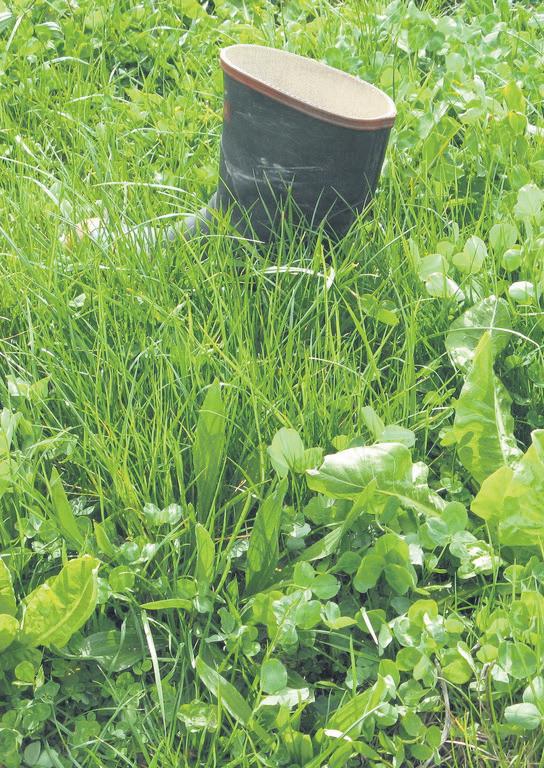








In Canterbury we’ve been fortunate to have been spared from the drought conditions that have been experienced over the 2024/25 summer in the top of the South Island and parts of the North Island, although parts of North Canterbury have been very dry at times.
The 2024/25 irrigation season started off looking like we may have been heading into a drought, with November standing out as having above-average temperatures and rainfall well below average.
This changed around Christmas/New Year (as anyone who tried to have a summer holiday in Canterbury will know) with a period of above-average rainfall. February was dry but near average temperatures meant that evapotranspiration wasn’t excessively high, March/ April have been back to above-average rainfall.
On the supply side of the equation, we headed into summer with groundwater levels below average in many parts of Canterbury, which resulted in constrained supplies for some water users with resource consent conditions linked to groundwater levels at the beginning of the season (and potentially also for others with insufficiently deep wells).
Lowland streams that are dependent on groundwater were flowing at lower-than-normal levels, and foothills-fed rivers were low.
While Canterbury has avoided drought this time round, it’s worth considering the difference between types of drought, and how irrigation and water storage fits into the
picture. Irrigation prevents meteorological drought (lack of rainfall) becoming agricultural drought (excessive soil moisture deficit), but this depends on us not experiencing a hydrological drought (low river flows and / or groundwater levels) at the same time.
The severity of an agricultural drought depends on how it impacts on farm production, so in a region like Canterbury that has a high proportion of irrigation-dependent land uses, the consequences of a hydrological drought coinciding with meteorological drought can be severe.
In Canterbury we are fortunate to have most of our irrigation water supplied from the alpine rivers or groundwater.
The alpine rivers’ flows are driven by the climate further west and are often flowing high when we have dry conditions on the Plains.
Groundwater levels on the Plains are for the most part driven by recharge from the land surface and rivers in the previous year(s), offering some degree of resilience to climate variability.
Irrigation schemes and water storage are engineered solutions to get us through the times when both the climate and hydrology refuse to cooperate and the different types of drought coincide.
Water storage is the engineering solution

The source: In Canterbury we are fortunate to have most of our irrigation water supplied from the alpine rivers or groundwater.
that can get us through years when hydrological drought occurs at the same time as meteorological drought – i.e. when the water isn’t naturally in the right place at the right time. There are several years in the historic re-
cord when water storage would have been essential to prevent severe (long duration) agricultural drought occurring in Canterbury if the current level of irrigation development had existed.
This may happen more frequently in the future with a changing and more variable climate. We also cannot rule out future changes to water allocation rules perhaps making surface water and groundwater supplies less reliable than they are now.
It’s tempting to think that scheme and onfarm storage in Canterbury has set us up well for future droughts. However, in many cases the volumes of stored water (per irrigated hectare) that have been developed are more suitable for buffering short-term variability in supply rather than getting through a period of severe drought.
Creating resilience to drought is an ongoing challenge that is likely to involve a combination of factors, including large-scale community water storage development, efficient distribution, on-farm irrigation systems and potentially land-use change.













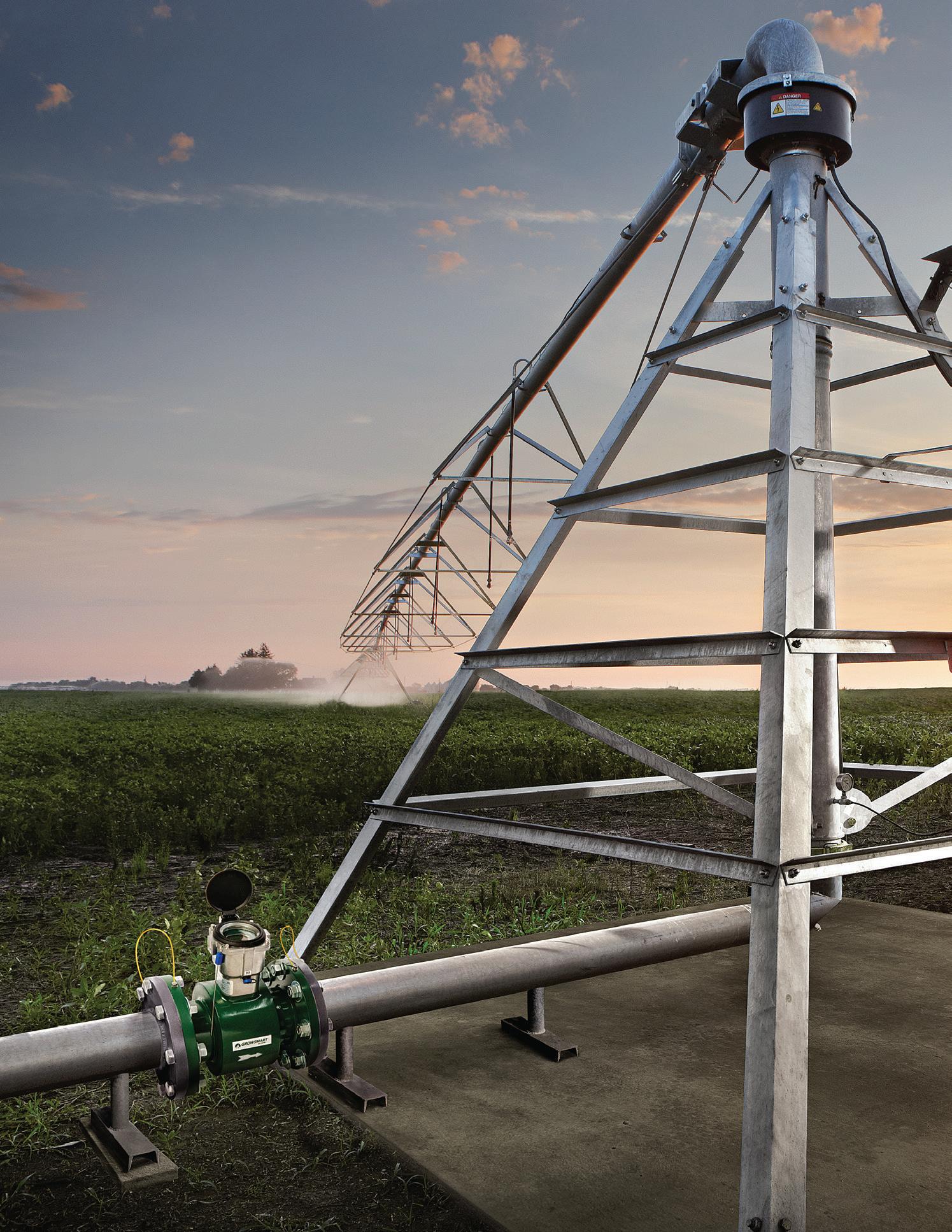





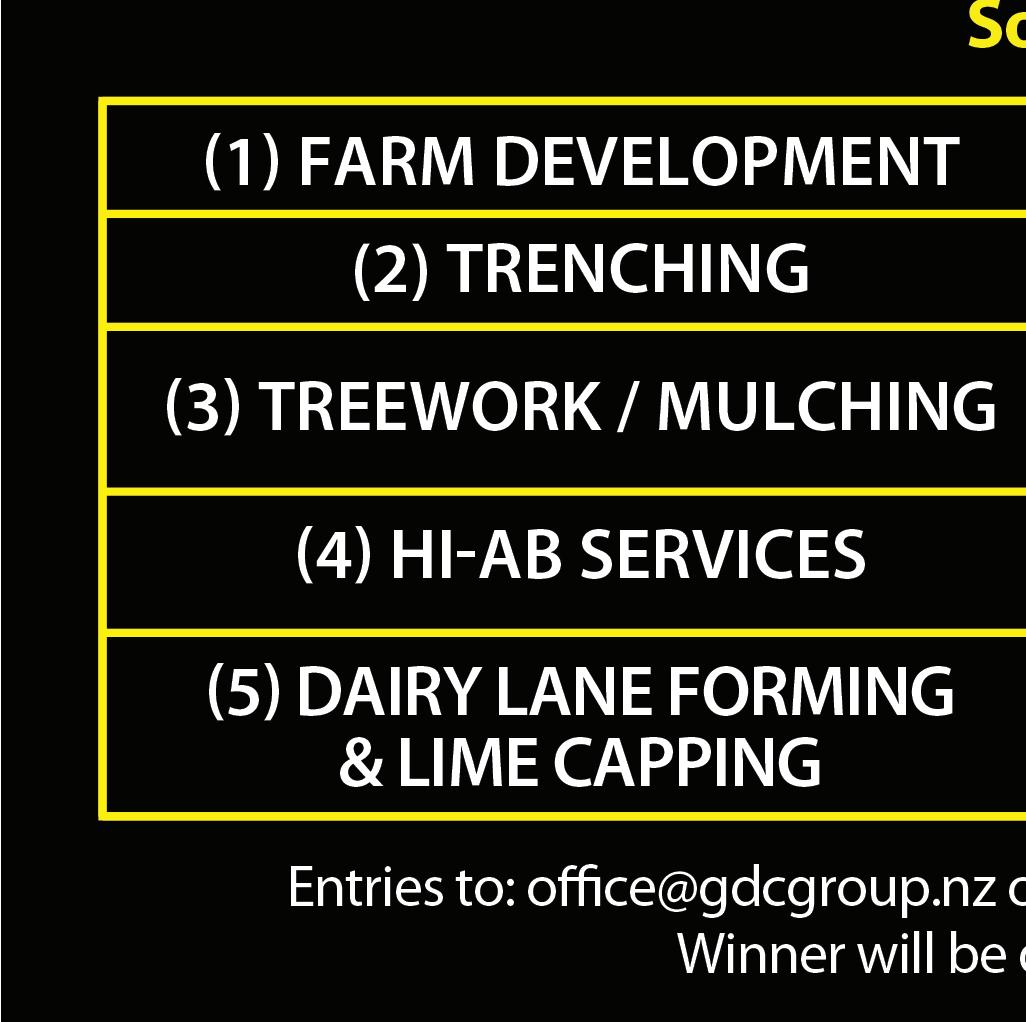







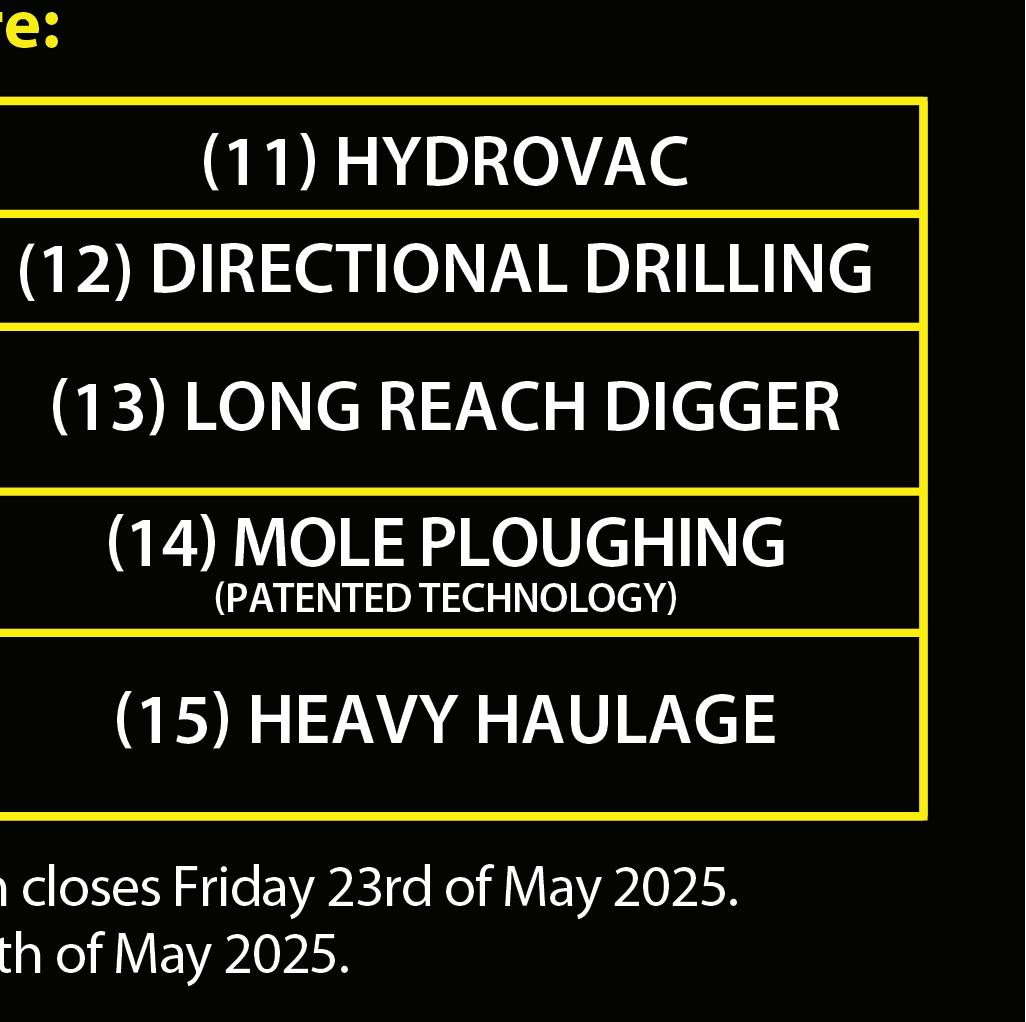

The Fossil Creek Angus team is proud to present 8O R2 Angus bulls at their upcoming sale on Tuesday 10th June. It is a line up with remarkable depth, both in the paddock and on paper.
] Advertorial by Fossil Creek Angus Emphasis first and foremost is on strong maternal traits including calving ease, growth, fertility and milking ability, coupled with carcase weights, rib and rump fat and IMF.
A headline Herdsire is ‘Te Mania Rustler’, owned by Fossil Creek Angus, Stokman Angus in Rotorua and Ardrossan Angus in Australia. Rustler sons will be offered for sale for the first time at Fossil Creek this year.
Other key Herdsires include ‘Fossil Creek Ripcurl R018’, ‘Clunie Range Plantation P392’, ‘Fossil Creek Navigator N228’, ‘Fos-
sil Creek Prophet P136’, ‘Rockley Rocky Q7’, ‘Te Mania Powerman’ and impressive sons of stud yearling bulls such as ‘Fossil Creek Spirit S085’, a Black Loch son.
All bulls have been semen tested, ‘H.D 50K’ DNA tested, independently structural and docility assessed and are backed by the rock-solid Fossil Creek 3 Year Guarantee for fertility and structure.
Bull walk days will be held on Wednesday 14th May and Thursday 29th May, from 1 to 4pm.

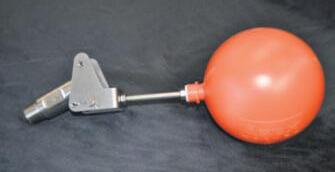
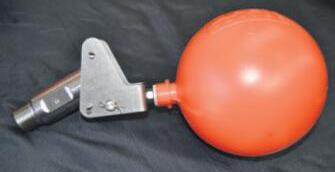










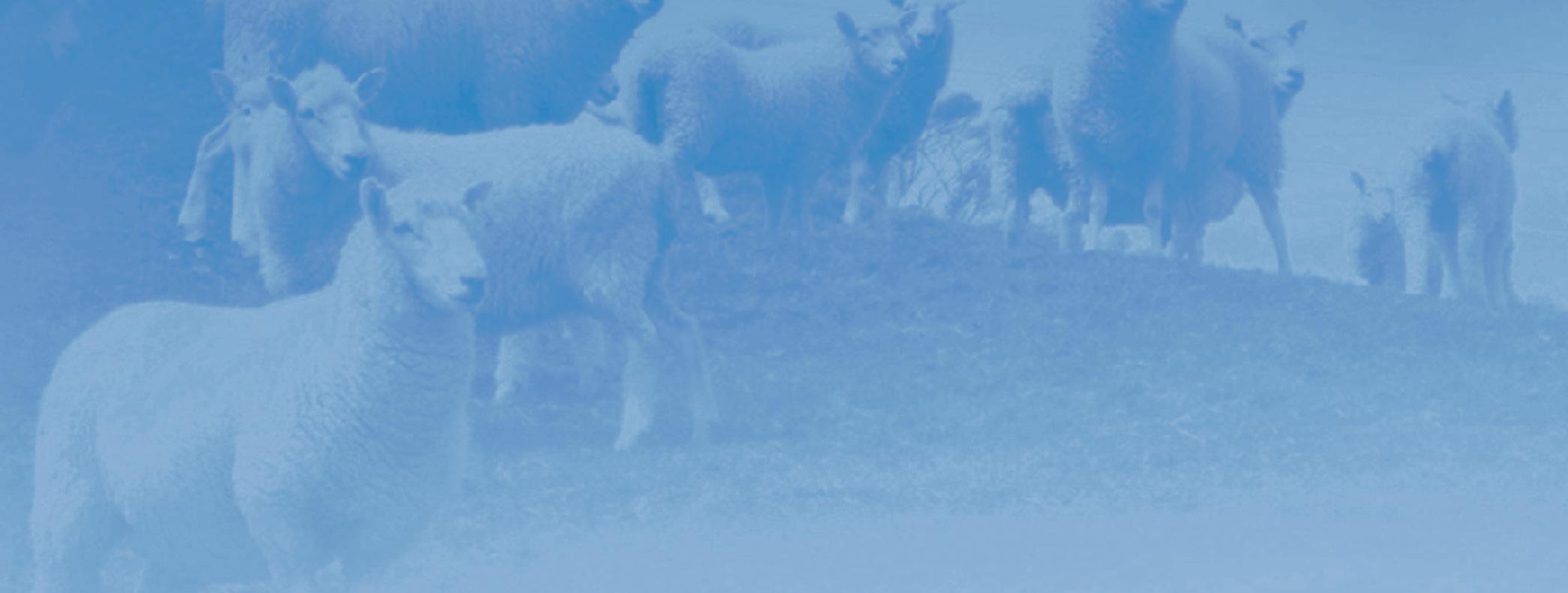





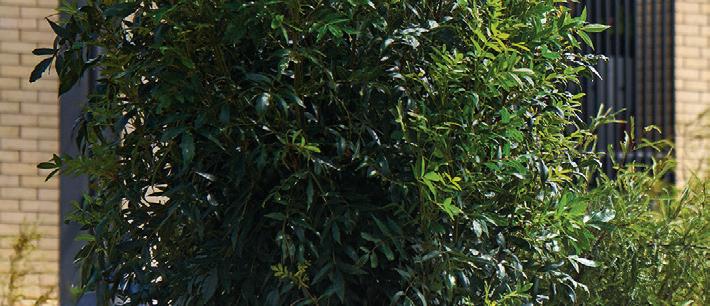

Our state-of-the-art village centre is opening soon at Kevin Hickman Village, hosting our premium on site amenities, independent and serviced apartments and a care centre.
The village centre will be at the heart of it all, creating a vibrant community hub for residents.


Artist’s impressions.
Register your interest for the latest updates.
Call Wendy on 342 4755 for more details or visit rymanhealthcare.co.nz
















The illustrious Donald Trump has played havoc with the world order. The wood fibre sector has been impacted, but not as badly as many other commodities.
] Laurie Forestry Ltd
So much has been written of DT’s every move and every word, to the extent the whole fiasco in my opinion is a media frenzy times 100. Indeed, what is actually happening, on any given day, is likely much different to what we see and hear.
But tariffs are tariffs and that has its own levels of abnormalities. Great to hear as at mid-April, if it is factually correct, that DT has reversed some of the China imposed tariffs. The realisation must be as I stated at the outset of this very sad and sorry affair, it is the US consumers and rampant inflation that will suffer at the hands of inane leadership.
For NZ Forest Grower and our reliance on China as a primary destination for wood fibre, times are getting a little tougher. Whilst prices were higher in Q1, we were producing far more logs than were being consumed and that has taken us to the “here we go again” scenario. CFR prices are dropping with some commentators suggest further decreases likely.
Importantly, log consumption in China is still chugging along at over 50,000 m3 per day. We need to remind ourselves this reflects about 85 hectares of mature NZ Radiata pine forests being consumed every day and that is when the market is off the boil.
On the downside, the Eastern Seaboard inventory remains stubbornly around the 4mil m3 mark and likely to increase in April with 45 plus vessels planned from NZ. That is about 1.7 mil m3 of logs a month for a market that is using 1.35mil m3 per month. I doubt you will need your abacus to work out what happens next.
On the upside, the tariff fiasco is having a net impact on shipping costs with NZ production slowly grinding down and plenty of vessels opening on NZ, Charterers have become the cat and the ship owners, the mouse. For Q1, it was the other way around.
Reduced shipping costs apply for both China and India, chasing CFR prices down for both destinations. None of that helps Kiwi forest-owners, as it is the production bubble that needs to burst for us to help both markets to recover.
The selling price (CFR) for the market indicator A grade in China is in a US$110-112 per cubic metre band as at mid-April. LC’s and contracts are harder to get than tariff reductions out of DT and the market is in a nervously poised mode, waiting to see where the bottom is.
For those of us focussed on the India market the news is more positive but not by a great margin. Current CFR prices for A grade are in a US$116-120 band, a US$8-10 reduction on prior levels. Demand is weak but





the inventory, whilst high, is not as eye watering as China.
For India the same story of over supply dominates, with NZ companies who have not been traditional players trying to find solutions outside China. The inventory situation was helped by the non-arrival in March of 2 vessels from Australia.
These have now discharged with a total 9 vessels expected in April and 9 in May. In both cases this represents the only NZ Log destination Port in India, Kandla receiving 1 – 2 more vessels per month than the market is currently consuming.
Market sentiment in India is weak currently, and what will be a surprise to many, labour shortages are reducing overall productivity. Many believe the market is close to bottom with many of the India economic fun-
damentals, including rampant middle class wealth growth, suggesting the current situation is a blip.
It is certainly time for NZ Forestry Inc to start investing in market development away from China, India would be a great place to start.
As it has been in the past our NZ domestic sawmills are chugging along, consuming good volumes of logs and at stable prices. Demand for logs to make house framing lumber is improving with good order books in the mix.
As always, please remember the thoroughly important message, “despite the challenges, it remains, as always, fundamentally important, the only way forward for climate, country and the planet, is to get out there and plant more trees”.



























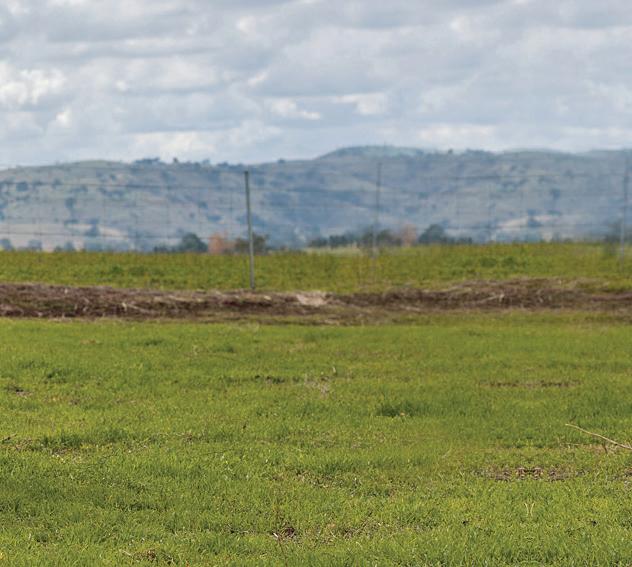























CFMOTO New Zealand is proud to announce the launch of the all-new U10 PRO UTV range, the latest addition to the acclaimed UFORCE family.
Building on the strong foundation of its predecessors, the U10 PRO series takes offroad utility to new heights with a combination of enhanced power, advanced technology, and refined design.
The U10 PRO represents a major leap forward for CFMOTO, setting a new benchmark in the UTV segment.
Powered by an all-new 998cc triple-cylinder naturally aspirated engine, the U10 PRO delivers 90 horsepower and 94.5Nm of peak torque, ensuring unrivalled performance, whether for work or play.
The introduction of CFMOTO’s exclusive Variable-Valve-Timing (VVT) system further enhances power delivery, maintaining torque over 90Nm from 3000rpm to 7000rpm, surpassing competitors like the Polaris Ranger 1000 NORTHSTAR and Can-Am Defender HD10.
“The U10 PRO range is more than just an upgrade; it’s a revolution in what a full-size UTV can offer,” said John Holding, General Manager at CFMOTO New Zealand.
“From its powerful new engine and advanced transmission system to its state-ofthe-art interior technology, the U10 PRO is designed to exceed the expectations of even the most demanding users.”
The U10 PRO’s new powertrain is paired with CFMOTO’s all-new, in-house-developed CVT transmission, offering a smooth and reliable driving experience at low speeds. Changes to the CVT profile and Electronic Fuel Injection (EFI) system optimised the driving experience. The vehicle’s towing capacity has also been significantly enhanced, supported by a stronger chassis designed to handle the most challenging tasks with ease.
The U10 PRO series introduces several cutting-edge technologies, including an ESHIFT system that allows for seamless gear changes, an Electronic Parking Brake (EPB) that automatically engages for secure parking, and an 8-inch MMI touchscreen dash with wireless CarPlay compatibility. These features, combined with upgraded comfort options like an adjustable steering wheel and
bench seat, make the U10 PRO a true leader in its class.
The U10 PRO is available in two distinct models to suit a wide range of needs:
This model offers impressive all-around performance for both work and recreational use, with features like 330mm ground clearance, 29-inch tyres, and off-road-tuned suspension for superior stability and handling.
With its bold, muscular exterior design and premium interior finishes, the U10 PRO range is as visually striking as it is functional.
The series is available in a variety of finishes, including Forest Green and Bordeaux Red.

More tow: The U10 PRO’s towing capacity has been significantly enhanced and with a stronger chassis is designed to handle the most challenging tasks with ease.
Designed for those who demand the ultimate in comfort and capability, the flagship HIGHLAND variant features a sealed cabin with a full HVAC system, electric tilt glass
windshield, and full doors with electric windows.
This model ensures comfort in any weather condition, making it ideal for those who need a versatile vehicle for all climates.




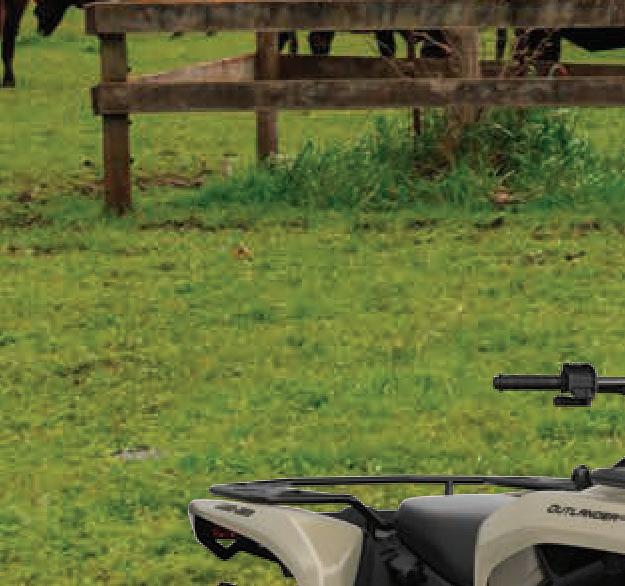


































A recent survey by Federated farmers shows that confidence within the industry is at last showing positive signs after many years on the back foot.
Lower interest rates, which seem to be showing signs of a continuation of the slide, and the Government unravelling red tape putting a spring back into the step of those who keep New Zealand afloat.
The marketing folk are also doing their bit with positive support from the highest level taking our produce into markets we haven’t had before.
OK, there is a certain sword hanging on a thread over our heads with respect to the USA, especially as many small exporters rely on that market for more than 80 percent of sales, and the “big players” must be watching with a very focused attitude.
My thought is that a small exporter can change direction and chase other markets much more successfully than a big exporter who has a huge infrastructure. A small fizz boat verses an ocean liner.
I am aware that some wineries are still holding stock from last season in tanks, and the new season crop is looking large, so the pressure is on for them, but hopefully Winston Peters and his team can help with that as they sing our praise around the world.
As far as our main produce lines, meat and dairy, we seem to be showing a clear advantage over our competitors. Wool will need to catch up, but that is a very old song sheet to sing from.
Combine the advantages and write them down in a column, then look at the negatives and do the same. Dippity do da, the positive column is much longer.
It is certainly time that farming gets a chance to shine. Remember the hidings the

‘I am aware that some wineries are still holding stock from last season in tanks, and the new season crop is looking large, so the pressure is on for them, but hopefully Winston Peters and his team can help with that as they sing our praise around the world.
industry has taken over recent years.
Global warming turning good pastural land into forests of pines, red tape that would sink any chance of survival, and interest bills that would choke a horse, and that is the tip of the iceberg.
It is very ok to have a wee dance around the kitchen table when you look at your next budget and find there is enough for a mallow puff.

The notion of entropy will probably enter public discourse in the coming decade. It should, as our net energy supply enters the decline phase more strongly. Here’s why.
] by Solis Norton
Growth is becoming harder to achieve both here and in other highly developed countries. The economic ‘headwinds’ are a symptom of two physical factors. The first is the global net energy supply. The second is complexity inherent in the systems underpinning ‘life as normal’.
The first factor gets more airtime than the second. It can be summarised succinctly for both fossil fuels and energy from renewable sources as follows in terms of exploitation to create growth.
A ‘drill, baby, drill’ mentality will not kick start a new wave of growth. The oil accessed will generally be in smaller pockets, of lower quality, and more challenging to extract and process than what we’ve had in the past. That will make it more expensive. Growth continues to suffer as a result. You may have noticed the global economy can no longer afford expensive oil.
A ‘go electric, baby, go electric’ mentality will also have limited impact.
Cheap gains can be made initially by adding electricity via wind turbines and PV panels into the existing grid. Minor upgrades to the grid can be made too at reasonable cost to enhance this.
But soon enough major grid upgrades will be needed to seriously boost capacity. At that point, the price of electricity for industrial and residential use will rise substantially and, again, growth suffers as a result.
The second factor gets less airtime and is more insidious by comparison.
Entropy is a thermodynamic concept in its purest form. It is well captured in the knowledge common to farmers and others working with equipment that without maintenance, things break down.
At the highest level of thermodynamics the universe tends to disorder, at a modest level; the hay baler and side-byside wear out.
If you think the hay baler is complex (and it is), spare a thought for the vast, intricate, and exquisitely interconnected systems that underpin ‘life as normal’.
The baler might need an annual service to continue. Systems for life as normal need continual and substantial attention just to maintain, let alone grow.
Industrial systems, commercial systems, health systems, education systems, welfare systems, transport systems, even the maintenance systems themselves – they are all critical.
As time progresses and our net energy supply declines, we’ll find that not only is growth no longer happening, but maintenance is limited too.
We might sacrifice bits from some of these systems to try and enable growth in others. For some years that might seem successful.
Eventually we’ll need some clever decisions about how to simplify our systems in a way that social priorities continue to be met while things lower on the priority list are not.
A good idea might be socialising the concept of getting by on less more vigorously. The political skill required to sell this idea to the public likely exceeds that of the current Government.




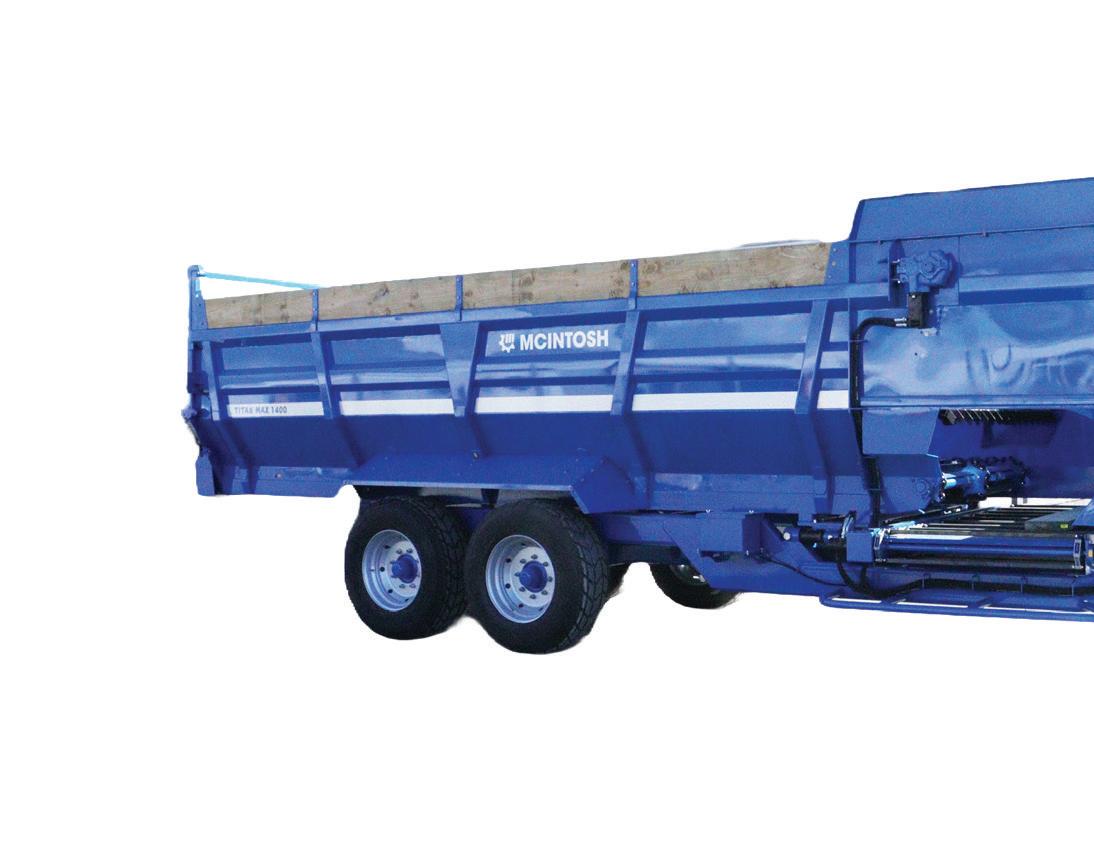



Heavy duty for NZ conditions, handles silage, round bales, sqaure bales, foodder beet and anything you can put in it. Super strong chains and hyd motors, patented cross conveyor with drop conveyor for feeding over fences or into feed bins.



Your choice of heavy duty Multi crop or super heavy duty Titan models from 9cbm to 27cbm. Many options and accessories to match your needs.



Huge 25cbm wagon has been refurbed and ready for many more seasons. Comes with scales etc

Top condition 5 bale feeder with side loading forks.











Three point linkage single feeders, trailed 2, 4 or 5 bale feeders with heavy duty build quality and finish.


New Zealand made to suit local conditions. Sizes range from 4.5 ton to 20 ton. Customisable with a variety of decks, axles, brakes and silage crates etc

Tidy order with rear forks, new lift ram fitted.

16cbm wagon with dual front elevators and large floatation tyres, good working order with scales.























